Yachting Monthly
- Digital edition


How to buy a boat: your guide to buying a yacht
- Duncan Kent
- October 17, 2023
Buying a yacht, especially your first, can be a daunting experience. Duncan Kent offers expert guidance on how to get it right

The process of buying a sailing yacht can sometimes be long-winded and stressful, especially if it’s your first time considering boat ownership. To avoid it being too daunting the first step is to think the whole thing through very carefully and then make a proper plan.
First and foremost, decide what type of sailing you will actually do, as it will be an important indicator as to what size and type of boat you should aim to buy. If you’re still learning to sail then it’s advisable not to buy too big a boat as the bigger it is the more problems and costs you will acquire. It’s often better to buy a used boat that you can practise in and make mistakes on, as accidents can be expensive in a bigger, more valuable boat.
What type of boat?

A trailer-sailer will save on marina fees and can be big enough for cruising. Photo: Graham Snook
Trailer-sailers
Key factors to look for in a trailer-sailer are size, weight and ease of rigging, launch and retrieval. Trailer-sailer masts are usually designed to be raised manually using an A-frame and tackle, and in many cases these will be provided with the boat. Being launched from a trailer means that it will most likely have a retractable keel and rudder, as well as a removable outboard motor.
Although it is possible to trail a small bilge-keeled boat, they are almost impossible to launch and recover without a crane, given the depth of water required for them to float on and off. If you’re planning on sailing with the family, bear in mind a retractable keel, whether it lifts or swings up, will nearly always impinge on the cabin in some way.
Above 750kg/16ft LOA you will need a larger (possibly four-wheel) trailer, with a more powerful towing vehicle and a few extra crew to help you rig and launch. In return, though, you’ll have a boat that you can live aboard in reasonable comfort for long weekends, or even the occasional week-long sailing trip.
Ideally, a cruising trailer-sailer would be no more than 24ft long and 1,500kg dry weight all up. If you’re going to be coastal cruising over long distances, however, you’ll probably prefer something bigger like a ‘trailer-able’ boat. These can be craned onto a larger, double-axled trailer and taken home or stored somewhere inland for the winter, saving marina berth costs or boatyard storage rates.
Not only does this make good economic sense, but it could also enable you to tow her to a new cruising destination each season. Probably the largest boat you could self-trail would be around 28ft, depending on its weight, beam and size of the towing vehicle.

Inshore sailing makes sense in a capable, affordable yacht like the Westerly Centaur. Photo: David Harding
Inshore/Coastal cruisers
Calling a yacht an inshore or coastal cruiser can be somewhat misleading, but since the EU introduced the RCD ‘Category’ system, the designations seem to have stuck. To my mind, any yacht that is seaworthy, properly maintained and has a skilled crew, is very likely to be capable of being sailed pretty much anywhere. A larger yacht may be more comfortable at sea and able to take on more crew and provisions, but a seaworthy boat should be just what it says.
If you plan to simply potter along within sight of land, stopping overnight in a sheltered anchorage or in a marina berth, then it obviously isn’t vital to have a boat that can withstand a storm at sea. You will rarely, if ever, experience storm conditions when you’re never more than a few miles from a safe refuge. That said, some still prefer an ocean-going yacht for coastal cruising ‘just in case’, and there’s nothing wrong with that, provided you can afford the extra maintenance and running costs.
Some experienced sailors swear by lightweight, high-performance yachts for coastal and offshore sailing. There’s a certain logic to this in that a quick boat stands more chance of reaching shelter before the worst of a challenging weather system hits.
My ideal coastal cruising yacht, however, is a compromise between a boat that’s reasonably fast and fun to sail, and one that can withstand the occasional Force 8 and 3m-high waves without frightening or risking the safety of my crew or family.

An Arcona 345 is a highly capable offshore yacht, but probably isn’t large enough be a true ‘bluewater’ yacht. Photo: Richard Langdon
Offshore/Ocean yachts
A true offshore/ocean-rated yacht will be strong, seaworthy and safe but, equally, it should exhibit a sea-kindly, predictable and well-balanced motion at sea, such that the crew remain able to sail, cook, eat and sleep regardless of stormy sea conditions.
What makes a yacht sea-kindly? First and foremost is its motion through, or over the waves. Many modern, lightweight yachts with flat, shallow underwater sections tend to slam into oncoming waves rather than slice through them. This not only jars the crew’s nerves and hurls everything out of the lockers below, but it also puts increased strain on the entire yacht as each thud shakes the hull and rig relentlessly on a long windward passage. Slamming doesn’t just test the integrity of the yacht to its limits, it drags the crew’s morale down and prevents them sleeping, cooking, eating or relaxing while off watch.
As with most aspects of sailing, there are many different schools of thought with offshore yacht design, but it is generally accepted that ocean-crossing yachts should be of a higher displacement than coastal cruisers and that they should have a deeper, vee-shaped forefoot to enable the hull to slice through oncoming waves.
A so-called bluewater cruiser is simply an offshore/ocean cruising yacht that has provision for living on board for extended periods of time under a wide variety of different circumstances. Usually, they will be better equipped with items like watermakers, generators, freezers, solar panels and sat-comms, but the style and design of the yacht itself will mostly be identical to an offshore/ocean-class yacht.

Stowage is an overlooked but vital consideration when assessing a cruising yacht. Photo: Graham Snook
What to consider
Accommodation.
Does the boat you’re looking at suit the style of sailing you plan to do? If you’re only going to day sail along the coast then don’t worry about sea berths, for instance, although it’s useful to have at least one long, straight berth you can fix a lee cloth to in case someone becomes ill. Big, central double berths are great at anchor, but of little use under sail.
Separate cabins are crucial if you have kids on board, so as not to keep them awake in the evening when the adults are still up. Private heads are important too, particularly if you are planning to have friends on board regularly.
Stowage is also a vital consideration for cruising that new buyers often overlook. It’s really annoying to have to remove half the contents of a vast stowage bin to reach a single item at the bottom – so look out for easily accessible lockers, especially near the galley.
Article continues below…
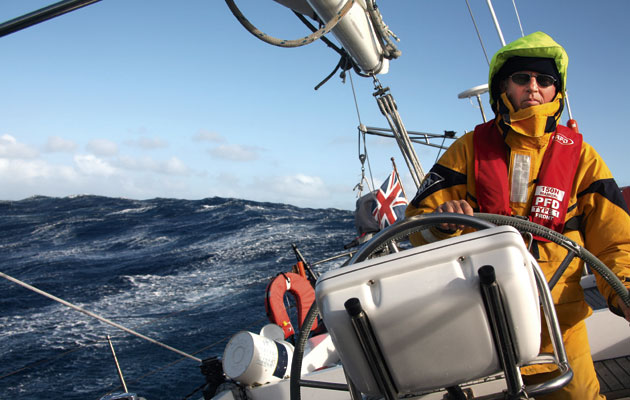
Heavy weather sailing: preparing for extreme conditions
Alastair Buchan and other expert ocean cruisers explain how best to prepare when you’ve been ‘caught out’ and end up…

Buying a second hand boat: The good, bad and the ugly
For much of the past decade, my wife Sally and I have been dreaming, planning and saving up to sail…
It’s important when family sailing to have the mainsail control lines led back near the helm, so the boat can be safely sailed singlehanded if necessary. Try sitting by the helm and operating a headsail sheet winch. Is the mainsheet nearby so you can dump the main in a gust? Is the mainsheet track positioned where young fingers can easily get trapped? Are there plenty of harness attachments? Is there stowage for larger items like dinghies?
Rig and sails
Unless you’re planning on racing, look for a sail plan that’s easily handled. Nowadays most cruisers choose sloop rigs with in-mast furling mainsails; in fact they can often be standard. You will lose a little performance, though, so if speed and pointing ability are vital then opt for a fully battened mainsail with single-line reefing. Virtually all new cruising yachts these days will come with a furling genoa.

Will a wheel or tiller suit you best? And is the mainsheet within reach? Photo: David Harding / SailingScenes.com
Wheel or tiller? Most older boats under 32ft have tillers, whereas most new boats over 26ft offer wheel steering. If you like to ‘feel’ the boat more then go for a tiller. If a wheel seems more natural then go for it but expect to lose a little of the feedback a tiller offers.

You can put a cat on a beach for a barbecue or to inspect and give the hulls a scrub. Photo: Yachting Monthly
Monohull or multihull?
Most new boat buyers start by looking at monohulls, with few giving multihulls a second thought. However, it’s worth stepping on board a few catamarans or trimarans before dismissing them. Better still, give them a try. You might find the level sailing, greater deck space and higher speeds worth the drawbacks of having a larger boat to park and reduced load-carrying capacity.
Cruising cats have increased in popularity hugely in recent years due to the extra space they offer. They also draw very little, so you can get right in close to the shore or creep up shallow creeks where fin keeled monohulls dare not venture. They take the ground easily too, so you can actually park up on a beach.

Shopping for a new boat is all part of the fun but beware of hidden costs. Photo: Messe Düsseldorf / ctillmann
New or used?
It’s great to own a brand-new yacht but there are many good reasons for choosing a cared-for used boat. Most will have had any initial faults rectified and are likely to come with all the necessary cruising kit. The downside is not knowing how well she’s been maintained. Depending on age, essentials such as the rig and engine could require expensive replacement.
Privately owned boats under five years old tend to be well shaken down, but not worn to the point of imminent repair. Older boats might well have gone through the first wear/replacement stage and have new sails, rigging and engine.
Most equipment, especially engines, lasts longer if the boat is used regularly. The exception is with charter boats, where everything will be well worn.
A charter yacht will endure ten times the wear and tear of a private one, despite being regularly maintained. Never buy an ex-charter yacht without getting a thorough, detailed survey.
Buying a yacht new
Before buying a new boat bear in mind you’ll need considerable additional kit that’s not included. Don’t get carried away with the options list while forgetting equipment essentials. A good guide is to allow a further 15-20% of the list price to fully equip her for cruising.
It’s also worth noting that the price displayed at a boat show may exclude delivery and commissioning, which can add another chunk to the bottom line.
When you find a boat that ticks all your boxes, go somewhere quiet and add up the real cost including any ‘essential’ options. If there’s anything left in your budget, tick off any ‘luxury’ items you’d like in order of preference, until the pot is empty. You might prefer to opt for a slightly smaller boat but equip it to a higher standard.
A word of warning: if you buy the biggest boat you can afford with the intention of adding goodies later, it will almost always cost considerably more than having them fitted at the factory or during commissioning.

No matter how much you like a boat, always engage a professional marine surveyor. Photo: Graham Snook
Buying a yacht used
Never make an offer on a boat before seeing it. Even if you’re not an expert it’s worth looking for obvious things before engaging a surveyor. Check for hull cracking, gelcoat blisters, evidence of collisions, squashy decks, dodgy wiring, damaged sails, water in the bilges, seized pumps and so on. If the boat is untidy and uncared for it’s likely to have been neglected in its previous life.
Get an idea of the value of that type of boat in basic form by checking prices of similar craft online. If they range from £20-£35,000, for example, start with the lower figure and add on the value of any extra equipment. For instance, if she has new sails, raise the base ‘value’ by £2,000. For a new engine, add £3,000, and so on. When you reach a figure you think is about right, offer the vendor 20% less and see what happens.
Always make your offer subject to survey, then if problems are discovered you can reduce your offer by the cost of any remedial work required. Once a deal is agreed, if she’s out of the water, retain 10% until she is launched and the powertrain is tested.

How well will the boat reverse and manoeuvre in tight marina spaces?
The test sail
I would never buy any boat without first taking it for a test sail unless it’s dirt cheap. Some sellers won’t want the hassle, but if she’s had a good survey and you’re really keen the owner should realise this and go along with it. If ashore, the launch/retrieval costs will be yours, as will the surveyor’s bill. If you agree to purchase immediately after the test sail you might not need to crane her back out again.
If buying new the broker should have a demonstrator in the water for you to sail. It might not be equipped to your specification, but it’ll be the same model.
If you’re new to sailing, take an experienced friend or surveyor along if possible. Take your family or your partner along too, to get their opinions.
From the moment you step on board keep your senses alert. How easy is it to get on board from the pontoon? How much does the boat tip over with your weight on the sidedeck? How easy is it to walk around the decks without tripping?
Take a camera and notebook and jot down anything you’re not sure about so you can double-check it later.
Checking the engine
The first thing to test is the engine. If it’s a used boat then pull the dipstick before starting it to check the colour of the oil – any whiteness could be water and is a sign of a problem. Make sure the preheat works and that it starts easily. Marine diesels often smoke a bit at first but should clear once the engine has warmed up. Check the exhaust to ensure it’s emitting a steady stream of water.
Try some simple manoeuvres ahead and astern to get the feel of how she handles under power. Some will have noticeable prop wash, especially those with a fixed-blade propeller, but you can often use this to your advantage once you know how strong and in which direction it acts.
Once on the move go up through the revs just to check there are no flat spots and that she revs to the correct level. Few skippers ever use full revs but it’s a good indicator that all’s well with the engine, transmission and prop. Return to cruising revs and go below to hear how much noise is evident, especially in the aft cabin.

Check the condition of the sails closely, especially along the seams
Inspecting the rig
Ask the owner to show you where all the sail controls are, don’t just let them sail you around. Helping to hoist sail will show how easy or difficult it is and make handling or gear problems obvious. If it’s hard to hoist a halyard, ask why. The solution might be simple (often a lack of maintenance in a used boat), but it need not be insurmountable.
Check the headsail furler if it has one, by unfurling and refurling it. If it’s stiff to furl, check the swivels for wear. It could simply be poor maintenance, or it might be something more serious like halyard wrap or failed bearings.
Once the sails are hoisted give them a good inspection, particularly along the seams and around the clew, tack and reefing cringles (metal grommets for control lines).

Laminate sails, such as these FibrePath Enduro sails from Ullman, utilise the boat’s pointing ability and rig controls. Photo: Richard Langdon
Once you’re sailing, ask to take the helm or have your experienced mate take over. You’re looking to see how well balanced she is (assuming the sails are trimmed correctly), and how reactive the steering is.
Ideally, the helm ‘feel’ should be light but positive. It should feel like you’re just there to change direction if needed, not to keep permanent pressure on to hold her on course.
If the steering is noticeably heavy, you have too much sail up or they’re not trimmed correctly, but it’s worth asking the owner or the rep about it.
All points of sail
Put in a few tacks to see how quickly she comes around and how well the deck gear functions. Try her on every point of sail – close-hauled, reaching and running, to see what she’s capable of and if she has any particular foibles.
Depending on the sea conditions, see how she handles with a bit too much sail up and if possible how she copes in strong gusts. Then find out how easy it is to put a reef in.
Check the navigation instruments are all functioning as they should and, if it’s a particularly complicated system, ask the owner or the rep to go through all the nav instruments with you. Finally, hand the controls over to someone else and go below to see what it’s like under sail. Take note of steps, grab handles or bars and fiddles, and then simulate going to the loo, preparing a meal, lying in a berth or plotting a fix at the chart table.

For ocean sailing a yacht with a longer keel is best for comfort in heavy seas
Buying a long keel yacht
The extra drag created by their large wetted area makes them relatively slow compared to more modern designs, but they provide a comfortable ride in heavy seas, with the fullness of the keel limiting leeway and helping to keep the boat on a straight course downwind with little or no adjustment to the helm. Popular for ocean cruising but poor at manoeuvring under power in tight marinas.

A fin keel should make a boat faster and more agile
Buying a fin keel yacht
Cutting away the forefoot of a long keel reduces the hull’s resistance to tacking and manoeuvring, while also lessening hydrodynamic drag and thereby increasing speed. Many have ballast bulbs at the bottom to lower the yacht’s centre of gravity (CoG). The resulting short, deep keel makes a boat much more agile.

An obvious advantage of a twin keel is its ability to take the ground
Buying a twin keel yacht
Also called bilge keels they provide low draught for shallow water cruising and allow a yacht to take the ground upright without supporting legs. One drawback is increased leeway when sailing hard on the wind, due to the reduced wetted surface, and a propensity to heel more readily, due to the higher CoG. Often kept on drying moorings which can put the keel/hull joint under repeated pressure, so check for GRP cracks.
Enjoyed reading this?
A subscription to Yachting Monthly magazine costs around 40% less than the cover price .
Print and digital editions are available through Magazines Direct – where you can also find the latest deals .
YM is packed with information to help you get the most from your time on the water.
- Take your seamanship to the next level with tips, advice and skills from our experts
- Impartial in-depth reviews of the latest yachts and equipment
- Cruising guides to help you reach those dream destinations
Follow us on Facebook , Twitter and Instagram.
- BOAT OF THE YEAR
- Newsletters
- Sailboat Reviews
- Boating Safety
- Sailing Totem
- Charter Resources
- Destinations
- Galley Recipes
- Living Aboard
- Sails and Rigging
- Maintenance

15 Tips for Buying a Sailboat
- By Peter Berman
- Updated: October 2, 2019
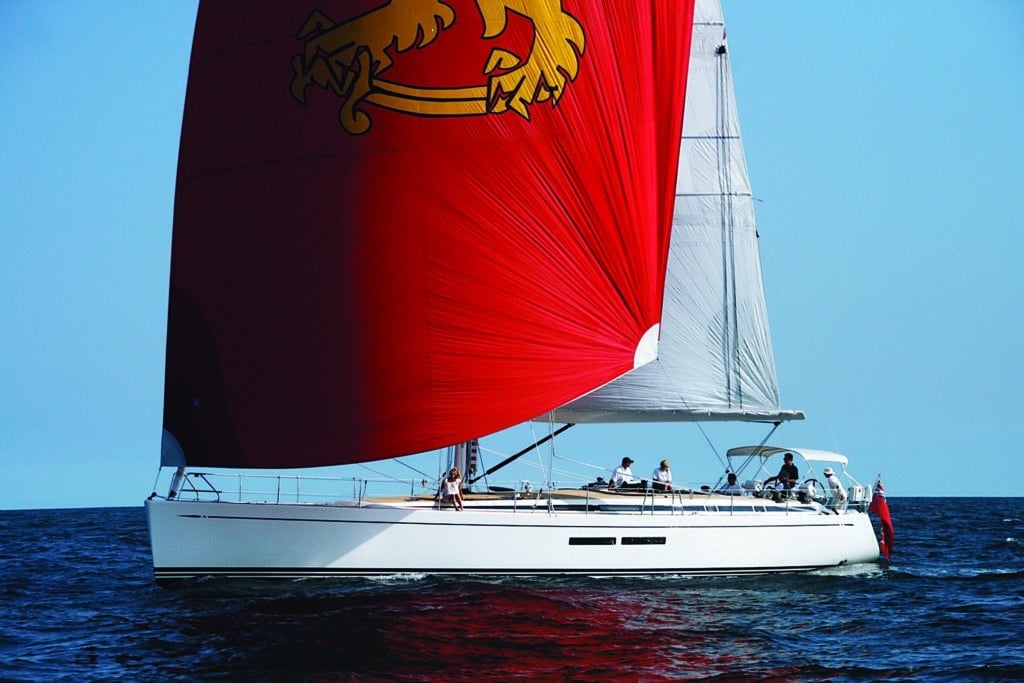
Run a dinghy around any major harbor in the world’s far-flung cruising grounds, and it’s quickly apparent that there’s no such thing as a “perfect” cruising boat. But if you’re in the market for buying a used sailboat or cruiser, the essentials are nearly universal for every sailor: You need a boat that you can readily afford (including the refit and/or outfitting), that meets your specific needs (depending on size of crew and intended itinerary) and that will be saleable afterward. Sure, high-end custom one-offs may be better constructed than “classic plastic” production boats, but that doesn’t necessarily translate into a better cruising experience . Need advice on how to buy a sailboat? Below are some sailboat buying tips divined from owning and sailing more than 100,000 miles in a dozen very different cruisers — from high-tech performance ocean racers to traditional split-rig wooden boats — over several decades.
Tip 1: Remember the 30:70 rule: The builder makes 30 percent of the boat and purchases the remaining 70 percent from other suppliers, almost all of which has to be periodically replaced at ever-higher prices. The 30:70 rule helps explain high rates of depreciation — typically 50 percent after the first decade and 75 percent after the second.
Tip 2: Focus on the total acquisition costs: the purchase price plus the inevitable refit. A good rule of thumb is to use only half the boat budget to buy the sailboat, then employ the other half for the requisite upgrades. A common boat-buying mistake is not reserving enough money for the overhaul. Also, prepare a realistic annual maintenance budget before the purchase. A boat stuck on the dock provides no joy.
Tip 3: Avoid being beguiled by a long list of equipment and cosmetic touch-ups. Fact: Most equipment will probably require replacement. Also, brokers and sellers know that cosmetics help sell boats, but they don’t make them sail any better. Similarly, view claims of a “recent refit” with skepticism. Does new anchor chain or new sails make the boat worth more when chain and sails are part of a boat’s normal complement of gear? (And that actually may be a “yes” when it comes to sails, but rarely will you find a used boat with a new inventory.)
Tip 4: The major refit costs will likely involve the rig and engine. After 15 to 20 years, it’s long past time to pull the mast, upgrade the standing rigging and terminals, take apart the spar and inspect for crevice corrosion and cracks, replace blocks, inspect the sheaves and mast step, and beef up gear as necessary. For extended offshore use, the general rule is to replace everything with heavier rigging and equipment. Losing a mast offshore makes for a very bad day. Paint makes masts look better but often hides corrosion.
Tip 5: Likewise, after two decades, it’s time to pay the “engine piper” — or pay him later. There are basically two options: rebuild what’s already installed (saving half the cost) or repower with a new engine. Typically, the in-and-out labor costs are equal to the cost of a rebuilt or new engine. Changing engine brands can significantly add to the price. Remember, many experienced cruisers cover as many as half their miles under power (especially those running up and down the Intracoastal Waterway). So a reliable engine is essential. No one ever complains when it starts up every time! Also, budget for ample spare parts; obtaining them in distant ports can be a real headache.
Tip 6: Nothing improves comfort more than size. Within limits, everything on the boat can be changed except size. But size is a double-edged sword, as costs and maintenance even in slightly larger boats are disproportionately higher. As size increases, so does volume. A 40-footer will have twice the volume of a 30-footer. When discussing size, focus on the waterline length. Length matters because size yields more storage space and more accommodations, and longer boats tend to sail faster, with a smoother motion. Bigger boats also provide the ability to take on additional crew for longer passages.
Tip 7: The boat’s gear is one of the most important factors to consider when buying a sailboat. With the right gear, including electric winches for furling mains or halyards, a senior couple in reasonably good condition can take a 60-footer offshore. But the maintenance and operating costs of such a vessel can approach six figures yearly. Most cruising is done in affordable vessels in the 40-foot range, where traditional gear gets the job done. All that said, when cruising really took off in the 1960s and 1970s, a 25-foot fiberglass production boat was often considered big enough for offshore work.
Tip 8: As mentioned at the outset, there’s no such thing as a perfect cruising boat, no matter how large the budget. Moreover, one’s notion of an ideal cruiser changes with experience, intended usage and age. Boats are always works in progress. Center cockpits with island double berths have nice accommodations for dockside use. For offshore sailing, on the other hand, and especially if they eschew island doubles for snug sea berths, aft cockpits enhance the sailing experience. Jib furlers and electric winches make life easier but also can introduce cost and maintenance issues. Everyone underestimates the cost of owning and operating a functioning cruising boat.
Tip 9: Beware of fancy joiner work and the liberal use of external teak. It’s nice to look at, but it doesn’t make the boat perform any better and is costly and/or time-consuming to own and maintain. Similarly, unless you have deep pockets, avoid teak decks. (Teak is lovely, but it’s also awfully hot in the tropics.) Whether screwed or glued, after 15 years, teak decks are typically ready for replacement, nowadays at a cost that would buy a nice cruising sailboat.
Tip 10: Given the choice, opt for a boat drawn by a reputable naval architect over one from a builder who designed his own boats. I’ve found that the collaborative efforts produce better boats. Pay special attention to designers and builders who focus on cruisers, not raceboats. When you’ve narrowed down a prospect, learn about the boat’s history, talk to owners of similar boats and experienced surveyors, and, when applicable, contact the club associations of respective models, which can be good sources of information. Whatever you’re considering, remember that a boat that’s “lived in the islands” is apt to have had a hard life.
Tip 11: If you’re truly considering long-range cruising, think long and hard about the boat’s accommodations for use offshore. Double berths in the bow or stern are wonderful in port, as are swivel chairs in the main saloon. Without functional sea berths amidships, however, the crew will wind up sleeping on the cabin floor and asking when the trip will be over. Any sea berth worthy of its name is a minimum of 7 feet long and has a proper lee cloth.
Tip 12: Like Napoleon’s armies, crews travel on their stomachs. Spacious galleys are fine alongside a dock, but at sea you need a galley where the cook is secure and the pots and pans stay off the cabin sole. If you really want to eat well offshore, nothing beats a large freezer or crews handy with a rod and reel.
Tip 13: Marine toilets can and do fail, usually at the most awkward time. Spares help, but a second head is better. Repairing a head when underway is probably the worst job afloat.
Tip 14: Regardless of your budget or the size of your vessel, take safety seriously. That means a certified ocean life raft, EPIRBs, SOLAS-rated and -equipped life jackets with harnesses, a VHF radio with AIS, ample bilge pumps and even a sat phone if voyaging offshore. Before loading up on electronics, cover the safety gear. Sure, it’s nice to have an SSB radio, a big-screen chart plotter, an autopilot, a TV, a Wi-Fi router and so on. But buy the life raft first — if not for yourself, then for your crew and loved ones (even if they’re not sailing with you).
Tip 15: When in doubt, walk away. Unless the boat inspires real passion, it’s the wrong boat. Find the most competent and highly regarded surveyor available. Ask him or her about the required refit and likely costs involved. I’ve never regretted walking away from, or spending the money on, a “problem” survey. Make sure you have a serious sea trial — and not just a short run with the engine, and a quick raising and lowering of sails — in a good breeze. Even very experienced sailors can fail to note the obvious on sea trials, especially rushed ones.
Looking back on the cruising boats I’ve owned, my favorite was a fiberglass 45-foot ketch built in the early 1970s with an aft cockpit, a centerboard and double headsails. It had none of the amenities we now take for granted (a small portable generator handled the “electrics”), yet we fairly scooted across the Pacific. Close behind was a 35-foot block-and-tackle wooden ketch built in the 1960s, with no winches. The larger boat is still going strong in the islands, the smaller one in Alaska. So that’s my final tip: You can sail a long way on a simple boat.
An engineer by training with over four decades of experience voyaging in the Atlantic, the Pacific and the Caribbean, Peter Berman is the author of Outfitting the Offshore Cruising Sailboat (Paradise Cay Publications, 2011).
Read about: Boat Buying | Sailboat Reviews
- More: boat buyer's guide , How To , Sailboats
- More How To

Adding Onboard Electronics? Here’s How To Get Started
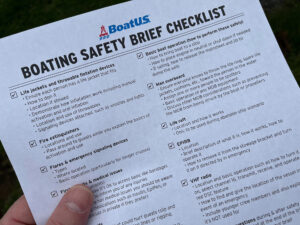
7 Boating Safety Tips for Summer Cruising
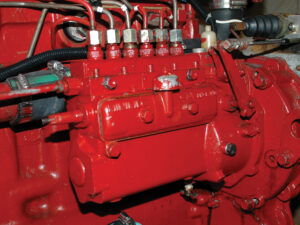
How to Prep for a Diesel You Can Depend On
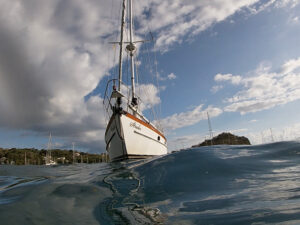
Anchoring in Paradise
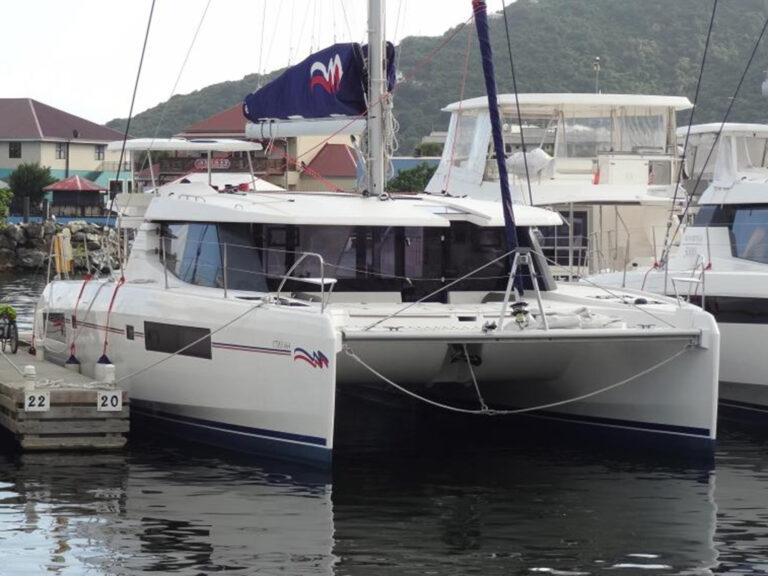
Now For Sale: Leopard 45

The Long Way Around

Sailing to the Land of Shrimp
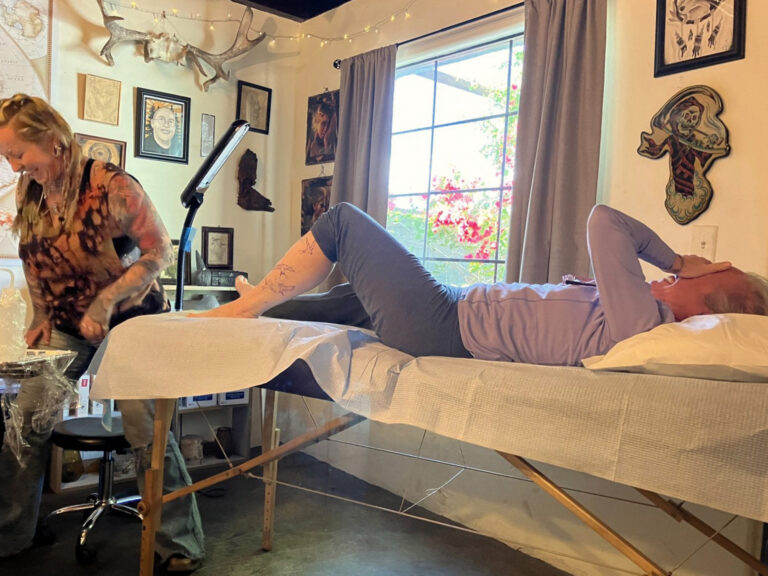
Swallow Tattoos and Sailors
- Digital Edition
- Customer Service
- Privacy Policy
- Email Newsletters
- Cruising World
- Sailing World
- Salt Water Sportsman
- Sport Fishing
- Wakeboarding

The global authority in superyachting
- NEWSLETTERS
- Yachts Home
- The Superyacht Directory
- Yacht Reports
- Brokerage News
- The largest yachts in the world
- The Register
- Yacht Advice
- Yacht Design
- 12m to 24m yachts
- Monaco Yacht Show
- Builder Directory
- Designer Directory
- Interior Design Directory
- Naval Architect Directory
- Yachts for sale home
- Motor yachts
- Sailing yachts
- Explorer yachts
- Classic yachts
- Sale Broker Directory
- Charter Home
- Yachts for Charter
- Charter Destinations
- Charter Broker Directory
- Destinations Home
- Mediterranean
- South Pacific
- Rest of the World
- Boat Life Home
- Owners' Experiences
- Interiors Suppliers
- Owners' Club
- Captains' Club
- BOAT Showcase
- Boat Presents
- Events Home
- World Superyacht Awards
- Superyacht Design Festival
- Design and Innovation Awards
- Young Designer of the Year Award
- Artistry and Craft Awards
- Explorer Yachts Summit
- Ocean Talks
- The Ocean Awards
- BOAT Connect
- Between the bays
- Golf Invitational
- Boat Pro Home
- Superyacht Insight
- Global Order Book
- Premium Content
- Product Features
- Testimonials
- Pricing Plan
- Tenders & Equipment
Yachts for Sale
For aspiring yacht owners looking for a luxury yacht for sale, we have put together a fine selection of luxury yachts and megayachts for sale from all over the world. Search BOAT International's collection of superyachts for sale and filter by type, length, asking price or age. Narrow the results by selecting specific features, or browse by speed, designer and much more.
Explore luxury yachts for sale
Search for everything from motor yachts for sale from renowned Dutch yards including Feadship and Heesen , premium Italian names including Azimut , Sanlorenzo and Benetti , popular British builders Sunseeker and Princess , and American megayachts for sale from US yards such as Westport .
Our collection also features sailing yachts for sale from legendary names such as Royal Huisman , Perini Navi , Nautor's Swan and Jongert , as well as some of the most well-known explorer yachts for sale .
Yacht Features
Propulsion System
Your life spent wisely
- Yachts for sale
Save search
Log in or create an account to save your search.
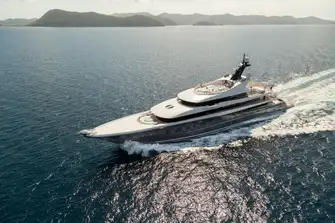
EUR 124,950,000† (EU VAT paid)
- Length: 90.1m (295.5ft)
- Guests: 14 guests in 7 cabins
- Built: 2010 (refitted 2024)
- Lurssen-Werft

O'PTASIA
EUR 89,999,000
- Length: 85m (278.8ft)
- Guests: 23 guests in 10 cabins
- Built: 2018
- Golden Yachts
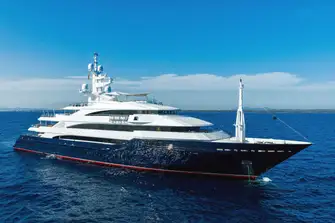
EUR 79,750,000† (EU VAT paid)
- Length: 80m (262.5ft)
- Guests: 18 guests in 9 cabins
- Built: 2007

PROJECT 825
Price on application
- Length: 75.8m (248.6ft)
- Guests: 12 guests in 6 cabins
- Built: 2025
- Feadship, Royal Van Lent
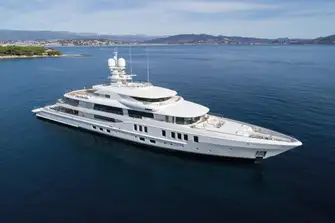
EUR 99,000,000 (EU VAT paid)
- Length: 74m (242.7ft)
- Guests: 14 guests in 6 cabins
- Built: 2017
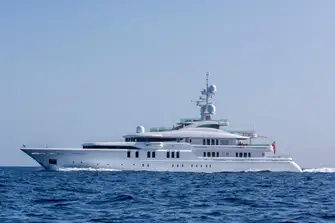
EUR 55,000,000† (EU VAT paid)
- Length: 70.6m (231.6ft)
- Built: 2011
- Proteksan Turquoise

EUR 24,800,000 (EU VAT paid)
- Length: 70.6m (231.4ft)
- Built: 2002 (refitted 2022)
- Royal Denship
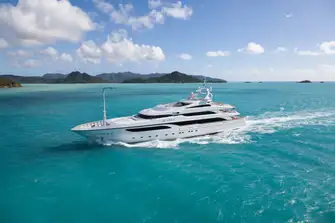
EUR 49,500,000†
- Length: 65m (213.3ft)
- Built: 2011 (refurbished 2021)

EUR 35,800,000
- Length: 64.8m (212.5ft)
- Built: 2006 (refitted 2017)

MAGNA GRECIA
EUR 15,000,000
- Length: 63.8m (209.3ft)
- Built: 1986 (rebuilt 2019, refitted 2019)
- Elsflether Werft
You've viewed 10 of 63
Register for an account today
Curate your own yachting space and find more of what’s important to you
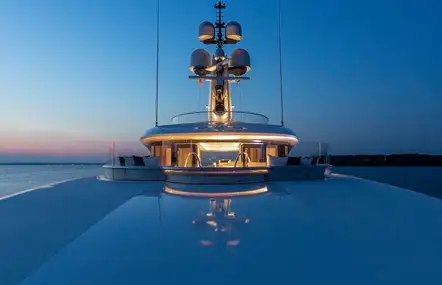
- Motor yachts for sale

- Sailing yachts for sale
Buy a yacht
Discover the Burgess difference
At Burgess, we always go the extra mile to find your perfect yacht and are here to guide you every step of the way during the process of buying a yacht. From securing private viewings to sourcing the best luxury yachts for sale from around the world, our expertise is your guarantee.
Access to luxury yachts unavailable on the open market
We don’t just have access to the largest public inventory of new and pre-owned luxury yachts to buy on the market, we shortlist your selection from a wide-reaching network of yacht owners to ensure you only ever get the yacht that you truly want.
Highly experienced yacht brokers with your needs in mind
Working together to deliver the best results is integral to the Burgess DNA, so all Burgess brokers share information globally to guarantee unrivalled market insight and ensure client requirements are always met. There is nothing more important than customer satisfaction.
Unrivalled view of prevailing market opportunities
The market moves quickly in the superyacht world, which is why we have positioned ourselves to gain the best vantage point, with access to the most attractive yachts to buy, to ensure you have a tailored selection wherever you are in the world.
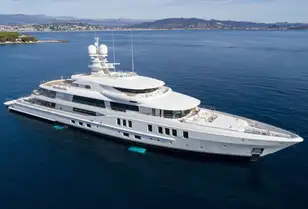
Price reduction on NEW SECRET

WILLOW is for sale
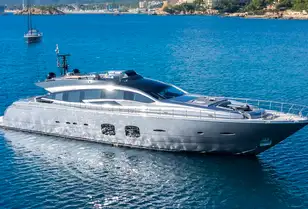
Price reduction on 33.2m LEVANTINE II
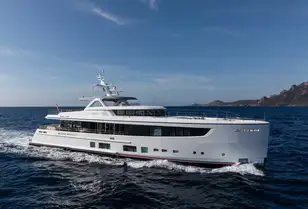
Award-winning SEAFLOWER is for sale
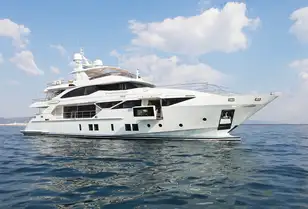
Price reduction on INSPIRATION
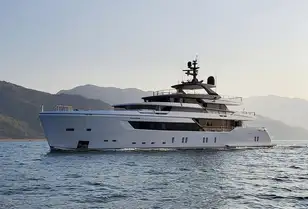
Price reduction on KAMAKASA
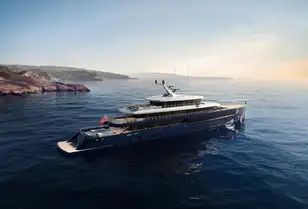
Own a brand-new yacht in less than a year
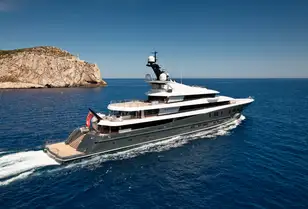
PHOENIX 2 is ‘THE best value 90m Lurssen – ever’
Sign up to our newsletter, stay in the loop.
Subscribe to our newsletter to keep updated with all things Burgess.
What would you like emails about?
- Chartering a yacht
- Buying or selling a yacht
- General superyacht news
In order to understand how we use and protect your personal information, please read our privacy policy .
- Mediterranean
- French Riviera
- Corsica & Sardinia
- The Balearics
- Croatia & Montenegro
- The Bahamas
- Caribbean - Leeward Islands
- Caribbean - Windward Islands
- British Virgin Islands
- US Virgin Islands
- New England
- Indian Ocean
- South East Asia
- French Polynesia
- The Red Sea
- Motor yachts for charter
- Sailing yachts for charter
- Latest offers
- Destinations
- New to charter
- Meet the Charter team
- Superyacht videos
- 360° yacht tours
- Corporate & event charters
- Inspiring charter ideas
- Charter FAQs
- Every day different

Charter RUYA
Remaining summer availability in the West Mediterranean
Huge sun deck with bar, BBQ, open-air jacuzzi and gym equipment for morning workouts

Charter NORFOLK STAR
Available from July onwards in the West Mediterranean
Lovely family yacht with great deck spaces, a large sunpad on aft and forward sunloungers
- Yachts for sale over 200 feet
- Yachts for sale from 150 to 200 feet
- Yachts for sale under 150 feet
- Tenders and chase boats for sale
- Yachts under construction
- Meet the Brokerage team
- Berths for sale
- Sold yachts
- Yacht marketing
- New Build Sales
- Refit a yacht
- Delivered yachts
- Yacht designers
- Meet the Technical Services team
- Meet the Yacht Management team
- Crew vacancies
- Meet the Crew Services team
- Procurement Services
- Charter Management
- Sales Management
- Yacht Marketing
- Meet the Insurance team
- 360 degree yacht tours
- Boat shows and events
- Office vacancies
- Talent pool
- Office locations
- Burgess in Asia
- Burgess Blue Oceans
- Strategic partners
- Press centre
- Company Operations
- Crew Services
- New Business
- Technical Services
- Yacht Management
- Burgess Impact Report 2023
Filter your results
- Yachts for charter

How To Buy A Beginner Sailboat

Last Updated by
Capt Chris German
June 15, 2022
Will 2021 be the Year You Buy Your First Sailboat?
The recycling truck just hauled away the last of the champagne bottles you quaffed ringing in 2021 and a new decade is now perched on your doorstep. For many, the brave new future that awaits them will involve crossing a few bucket list items off their proverbial list; and If you’re reading this article, odds are your first list item to cross off is to get a sailboat and sail into the sunset.
But that begs the question for the newbie sailor, which boat is the best boat for a beginner ?
Perhaps it’s not the make of the boat that is half as important as the features that the boat might boast? Evaluating what your needs might be, what your budget might be and what your skill level might be are all keys to happiness with your new craft.
Table of contents
First Up, Don't Buy A New Sailboat
Boats are like pets in a lot of ways, they require attention, they require water, and most likely you don’t want to come home to find it roaming around your neighborhood. Buying a new boat is like buying a prada puppy when there is a shelter dog who needs a new home just down the street. What’s more, there are literally millions of good deals on used boats that need new homes that will (a) keep one less fiberglass horror from the landfill and (b) save you thousands on day one when it drops in value the second you put the key into a new boat as it sits at the dock.
Used boats are worked in and the bugs are worked out. A used boat won’t make you cry when you t-bone the dock in your first season when you are still learning to let the main out and come to wind. Used boats cost a fraction of what you would pay for a new boat but don’t let that fool you, boats are expensive.
Start Small
Everyone knows the old adage: B.O.A.T. means Break Out Another Thousand. That’s pretty much true for anything over 23 feet. A 30 foot Catalina for example while very affordable and super common for newbie sailors has sails and motors that cost money, hauling and storage costs (odds are you won’t be able to keep this in your backyard) and of course, the toys. You’ll want the top of the line GPS plotter because without it, you will spend your first year until you learn to read a chart with it sitting on a sandbar because of its five and half foot draft. But what’s nice about the Catalina 30 is she is a super forgiving boat meaning when you misread the weather and get caught out in your first storm, you’ll live to tell the tale because the old Catalina 30s are stiff, fat and heavy. But again a heavy boat requires more money to move it so it's always a cost benefit analysis when picking your first boat.
Trailer Sailors: The Answer To Where Do I Park My Sailboat?
I have an admission to make. I have a 42’ Endeavour, a 35’ Morgan, and a 23.5 Hunter and my favorite is the little Hunter. She sits in my back yard all year long and costs me NOTHING. The other two boats cost me thousands just collecting dust in yard fees but the Hunter can be dragged down to the sea anytime I want and with a somewhat quick flip of the wrist her mast is up and she is ready to sail. I can even pack her for the weekend in my own driveway.
But when you put two dogs, a wife, a bunch of gear and cooler in my little giant, she gets much much smaller. If I had little kids or older parents the boat would be a nightmare. I sold one of these last year and an older couple wanted to buy it to get out and go sailing. The four foot freeboard would have killed them and there is no way their calorically enriched derrieres were going to fit together in the v- berth. It’s a small boat, and it rides like one in anything over 15 knots of breeze. But if you are a newbie sailor and you are still learning port vs starboard, maybe you should pick your sailing days judiciously and if there are white caps out there keep your little Hunter on the trailer.
But seriously, there are literally dozens of makes of trailer sailors out there and you can pick a very well appointed one up for under $5K if you shop around. And because it can be dry sailed down the Interstate, you can buy it in New Jersey next week and sail it in Florida next month and pay winter prices to sail in summer weather without having to spend a month delivering it down the ICW in winter.
Tell Me What You Want, What You Really Really Want...
Spice girls aside, you really need to know what it is you want in a boat and that is exactly why many start out sailing in community fleets or chartering in the Islands. Do you want a catamaran or a monohull ? A cat is all the rage right now and the epitome of comfort, but finding a place to dock a boat with a 15 to 20 foot beam is impossible in some places. A keelboat, while easier to dock, can often force even the stoutest of souls to the leeward rail in even the most minor chop. Do you want to lay out your hard earned cash to find that no one in your family has the stomach for your newest toy? A boat can be a lonely place when your wife refuses to join you.
My friend got a great deal on a Gemini Cat in Connecticut two winters ago. The boat was on the hard and part of an estate where the family had no interest in their departed father’s fantasy. He offered the family a fire sale price and stuck to his guns and he got a great deal to show for it. But soon enough he realized that the boat was not to his liking and proceeded to spend the next year gutting the craft and rebuilding it from the ground up. He’s got a great boat now and did most of the work himself, but it’s a cautionary tale. Think about what you NEED in a boat and not just what you want.
Physical limitations including proclivity to sea sickness are a factor. Do you want to spend weekends on this boat or just day sail it? Numbers of berths, layout of the boat and galley contents can all make or break a love affair with your new boat. So be honest with yourself and ask the tough questions. Do I really need a whosywhatsit or can I get by without it?
And the reverse is true too, don’t over buy. A built in wet bar is great in a 1970’s conversion van, but will you really use it on a weekender sailboat? Some things that the buyer lists as perks and value-addeds are not really worth it and there is no reason to buy something you know you will never use. Cut cost wherever you can because there will be at least a few thousand in things you didn’t think about when it’s all said and done. And please, don’t buy things from the Boating world just because they are cool, buy them because you need them to be happy and you know their purpose and function.
Now For The Name Dropping
OK here’s the spot where I tell you which brands are the best. Now I am a sailing expert, but opinions are like ...well you know. So start shopping and pick your favorite and comment on this post so that others might learn from your experience. But my first boat was a 1969 Lofland picnic - an old British Kit boat I found in the back a yard covered in weeds that I bought for $400. I lovingly restored it for a full season and realized why you shouldn’t paint a fiberglass boat. The hours of sanding and painting was undone in the first ten minutes after launching as the tide smashed me sideways into the dock putting a giant gouge in my brand new paint job. I tell you that not because I think you will ever find a Lofland picnic for $400, but I want you to look at boats with a jaded eye and diminishing expectations. This is not your forever boat, it's your starter boat so consider more than brand name and look at the price tag.
Buy used and work your way into it. The more work you do on it, the more you will learn from it. If you installed the battery system, then you will understand how it works. Stuff that is done for you teaches you nothing and I have heard all too many tales of guys who bought a boat and can only tack left because they never learned how to move the starboard jib car.
But here’s some names I think you should know- Hunter (obviously), Catalina, O’Day, Macgregor, Vanguard, Hobie, Corsair are all boats that I find to have good entry level boats in the 20’s range and can be found on the used market for a reasonable price tag. They are simple to rig, easy to find and for the most part not too expensive to own. I stuck Vanguard and Hobie in there because big boats get the glory, but dinghies make the sailor. If you want to dabble before you dive, a small boat is a great way to get started.
Boats I would avoid like to plague for newbie sailors- for various reasons but mostly because they are expensive or complicated rigs or designed to go faster than any newbie sailor should ever consider going. (In some cases they have all three factors working against them) J-boats, Stiletto, Morgan, Swan, Hinckley, Tartan all top my list of great boats. I have sailed each of them and love them. But I do feel that they are a little too much boat for a learning sailor so save that for your next boat, because you know there will be another eventually. By the way, anything over 30 feet should be avoided until you have at least one full year of ownership under your belt. The costs associated with and the more elaborate systems of a 30 plus foot boat is more than anyone who is still mastering the basics of ownership should take on
The Big Finish
So will this be the year you buy your first boat? There really isn’t a better time to do it than right now while winter pricing is still effect and Spring is just around the corner. Buying your first boat can be an enjoyable experience for the whole family. Buy smart and look at prices over brands. Assume you are going to spend the same amount of money either up front or in the end. IE. You buy a boat for $10K and want a $50K boat, you’ll need to put $40 K into it. If you buy a $50K boat and are happy with a $50 K boat, then you won’t have to lay out as much cash to get it where you want it. But then again, boats are like potato chips, you can’t stop at just one. And before you know it that 26 footer is gonna look quite meager next to that 30 footer and onward you will go. It’s the natural order of things and we all suffer boat envy eventually. The key is not to burn your family out on your first boat- so buy wisely my friend and sail far.
Related Articles
Capt Chris German is a life long sailor and licensed captain who has taught thousands to sail over the last 20 years. In 2007, he founded a US Sailing-based community sailing school in Bridgeport, CT for inner city youth and families. When Hurricane Sandy forced him to abandon those efforts, he moved to North Carolina where he set out to share this love for broadcasting and sailing with a growing web-based television audience through The Charted Life Television Network.
by this author
Buying a Sailboat
Most Recent

What Does "Sailing By The Lee" Mean?
Daniel Wade
October 3, 2023

The Best Sailing Schools And Programs: Reviews & Ratings
September 26, 2023
Important Legal Info
Lifeofsailing.com is a participant in the Amazon Services LLC Associates Program, an affiliate advertising program designed to provide a means for sites to earn advertising fees by advertising and linking to Amazon. This site also participates in other affiliate programs and is compensated for referring traffic and business to these companies.
Similar Posts

How To Buy A Cheap Sailboat
August 23, 2023

How To Choose The Right Sailing Instructor
August 16, 2023

Cost To Sail Around The World
May 16, 2023
Popular Posts

Best Liveaboard Catamaran Sailboats
December 28, 2023

Can a Novice Sail Around the World?
Elizabeth O'Malley

4 Best Electric Outboard Motors

How Long Did It Take The Vikings To Sail To England?

10 Best Sailboat Brands (And Why)
December 20, 2023

7 Best Places To Liveaboard A Sailboat
Get the best sailing content.
Top Rated Posts
Lifeofsailing.com is a participant in the Amazon Services LLC Associates Program, an affiliate advertising program designed to provide a means for sites to earn advertising fees by advertising and linking to Amazon. This site also participates in other affiliate programs and is compensated for referring traffic and business to these companies. (866) 342-SAIL
© 2024 Life of Sailing Email: [email protected] Address: 11816 Inwood Rd #3024 Dallas, TX 75244 Disclaimer Privacy Policy
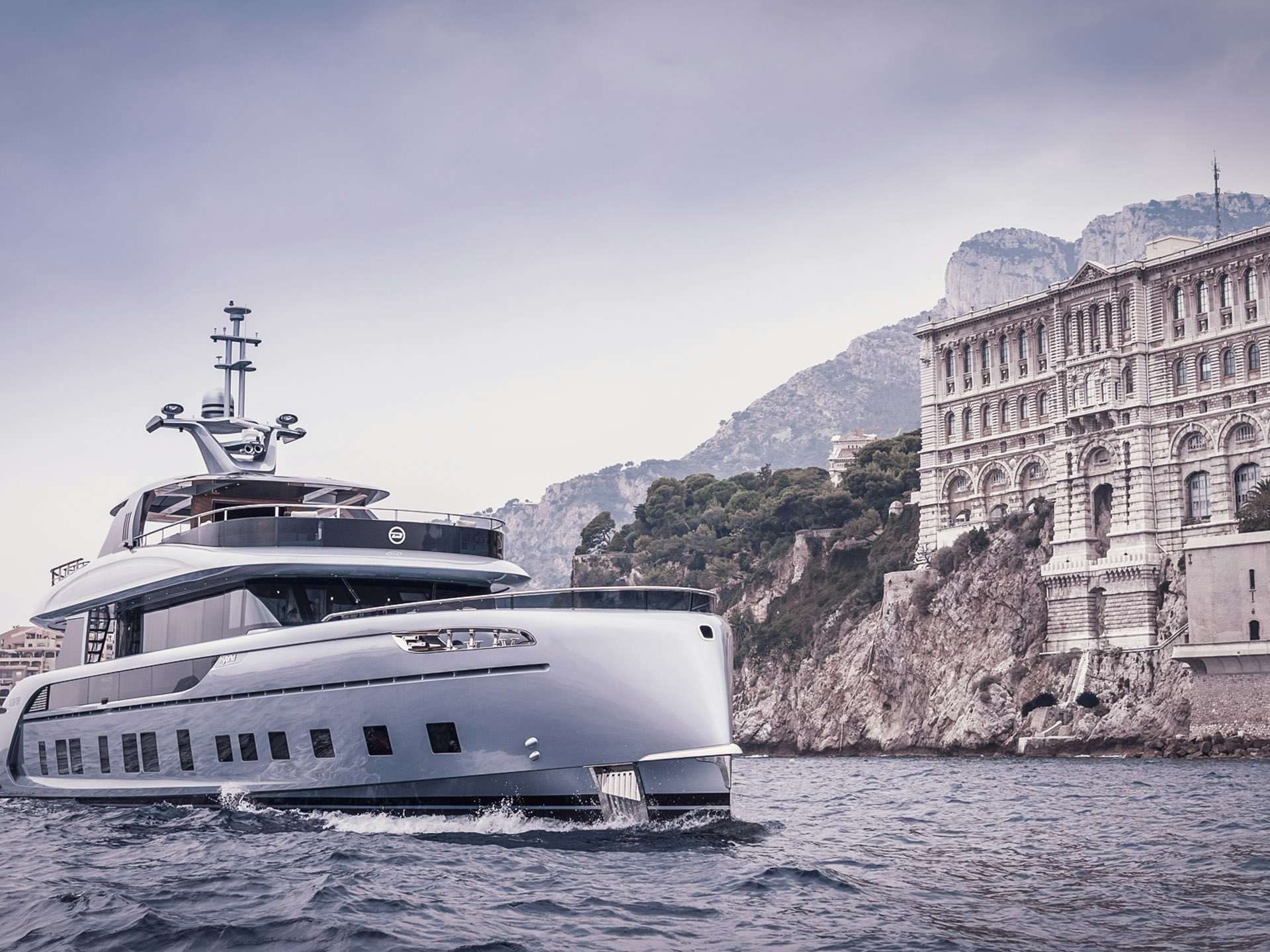
Buying a Yacht
The discerning buyer’s guide to purchasing a superyacht.
When you want to buy a yacht , expertise and experience are paramount. Northrop & Johnson’s brokers have a unique and in-depth knowledge of the superyacht industry and have an unrivaled reputation for honest dealing. With the industry’s most comprehensive database of buyers and sellers, and access to the widest fleet of luxury yachts for sale , our brokers are familiar with all the yachts on the market and always strive to find the perfect vessels for our discerning clientele.
Four Steps to Buying a Yacht
Looking to buy a yacht? From price and contract negotiations to the organization of surveys and sea trials to support with ownership structures and navigating legal complexities, Northrop & Johnson’s brokers are experienced in all aspects of yacht buying. You can expect a smooth purchase experience from start to finish, leaving you to enjoy the pleasures of stress-free yacht ownership.

Know The Type of Yacht You Want to Buy
Once you have made a decision to purchase a yacht, the next step is to determine exactly what type of yacht you are interested in buying. From yacht builders , to hull types, to the different styles and their uses, there is a vast array of different yacht types available, each with a varying range of wildly different sizes, styles, performance capabilities, purposes and of course budget.
When considering a yacht for purchase, be able to answer the following questions:
- What type of experience and use you are looking for in your ownership?
- Are you interested in a new or used yacht?
- Do you prefer a custom built or semi-custom yacht?
- Are you looking for a high-speed performance weekend boat, or a genuine round-the-world blue water cruising experience?
- What size of yacht are you looking to purchase?
- How are you planning to use your new toy?
You can start by browsing through our yacht type guide (below) to view the different types of yachts available and how they might best suit your requirements.

Find the Right Yacht to Purchase
Once you have decided on the essential elements, speak to your Northrop & Johnson yacht broker. Your yacht sales specialist will begin the search for your perfect yacht. Armed with a better understanding of what each category of yacht has to offer, the opportunities and choices will fall into place. Your Northrop & Johnson broker will provide you with a shortlist of yachts, including those on the market and even in private use, some of which may not necessarily be on the open market.

Yacht Offers, Boat Negotiations, and Purchasing
Once you have found the perfect yacht to buy, your Northrop & Johnson broker will handle all offers and negotiations. The buyer and seller will then agree the sale and purchase contracts. Typically, a detailed agreement known as a Memorandum of Agreement (MOA) is drawn up and signed by both parties after your selection is made and finalized. Your Northrop & Johnson broker will arrange a buyer’s sea trial and condition survey. There may then be a negotiation and once an agreement is reached the necessary documents will be exchanged, the payment made and the sale completed.

Yacht Ownership
Northrop & Johnson will advise on yacht ownership and corporate structures and handle all the administrative documentation to help your transition into yacht ownership. They have access to a wealth of expertise, including legal and construction teams, yacht managers, insurance specialists, crew and charter marketing experts, should you be looking to recoup some of the running costs. Ultimately, our job is to ensure a smooth acquisition from start to finish and throughout your entire ownership.

- How to Buy a Yacht
The different yacht types

Defined as a vessel larger than 165 feet, a mega yacht is the ultimate luxury yacht in terms of size, facilities and services. Vast luxury megayachts can accommodate a large number of guests in the utmost superfluity and comfort. The ultimate in luxury yachting, these vessels feature anything and everything from gyms, spas, swimming pools and cinemas to discos, conference rooms and other exceptional amenities.

Large, spacious, stable and designed for pure comfort, a modern superyacht ranges in size between 100 and 165 feet and is the perfect luxury yacht for family cruising and first-time charterers. Superyachts feature an array of amenities, such as large toy chests full of watersports equipment and ample interior and exterior spaces for guests to enjoy. The most popular superyachts for charter are heavy displacement motor yachts that sit well at anchor and provide stability.

Performance motor yachts range in size between 80 to 100 feet; they are nimble and capable of cruising shallow-water locales. These yachts quell the “need for speed,” and offer beautiful lines and stunning designs. They are ideal for those who want to explore more of the coastline in a shorter amount of time and are looking for the real kudos and adrenaline that goes with the luxury superyacht lifestyle.

A modern sailing yacht is perfect for those who want the size, comfort and facilities of a motor yacht with the flexibility to open up the sails and experience the undisputed appeal of sailing on occasion.

A classic sailing yacht will appeal to those looking for a genuine sailing experience and who want to capture the real romance and thrill of yachting. These yachts’ facilities are focused around sailing qualities. As such these vessels may not offer the same space and amenities as a modern sailing yacht, but they are the superlative option for bona-fide sailors.

Many yacht owners are choosing to cruise off the beaten path and explore more exotic locales. Yacht builders are obliging by building explorer yachts with ice breaker hulls, tough decks and even extra freezer space for yachts that will be off the grid for a while. These yachts not only are expertly built and extremely safe, but they also provide comfort in all sea conditions and still feature all the luxurious amenities, if not more, as the average superyacht.
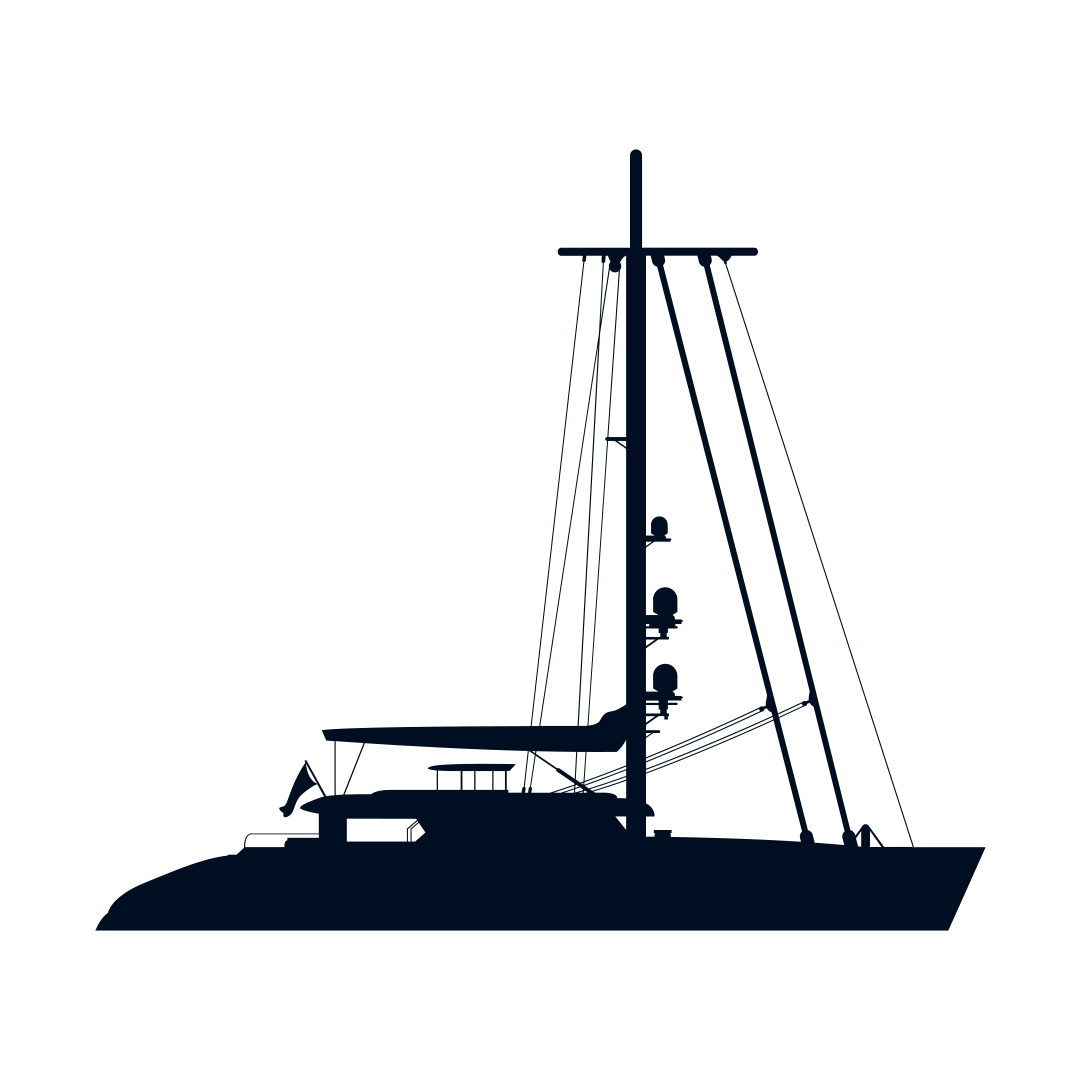
Available as both sail and motor, catamarans are best suited for those interested in shallow-water family style cruising. Thanks to a low draft, catamarans are particularly well suited for anyone who wants to discover often-overlooked (due to inaccessibility) locales. Catamarans are perfectly equipped for luxury and comfort and offer a great amount of space.
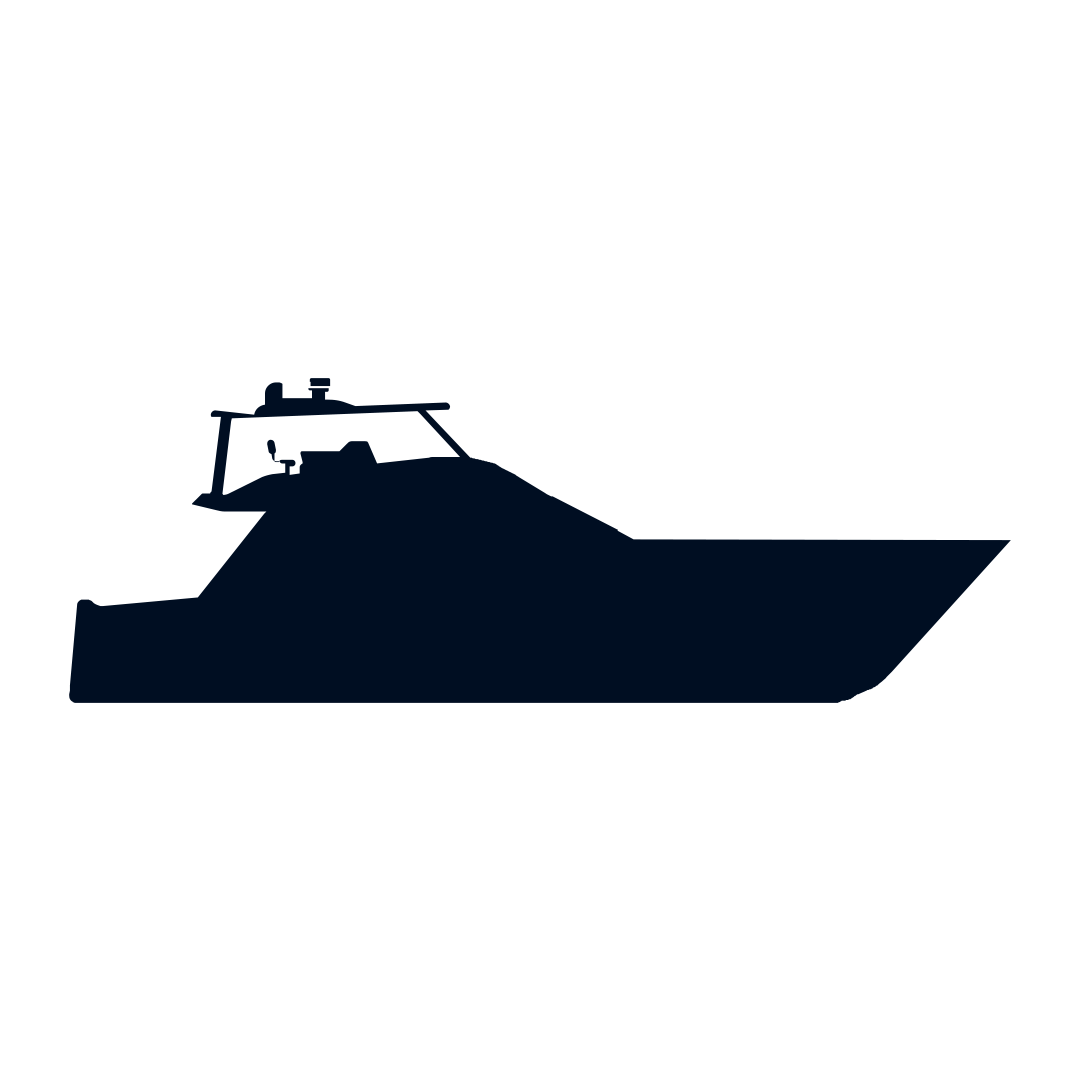
Sportsfish yachts are perfect for avid fishermen and outdoorsmen. These yachts are purpose-built for fishing. No matter if you’re a serious sport fisherman or if you and the family enjoy casting a line during weekend cruises, Sportfish yachts offer top performance and excellent seakeeping as well everything you need to reel in the big one.
Proud to be part of the MarineMax family
© 2024 Northrop & Johnson
Yachting World
- Digital Edition

Second hand boats: how to buy a ready to sail yacht
- Will Bruton
- February 8, 2022
A good ready to sail yacht can be hard to find in the current market. Thinking outside the box about where to look can help you get on the water faster. We take a look at options to buy a boat in turnkey condition
It’s no secret that if you want to buy a new yacht the wait is now likely to be two years or more. But what if you don’t want to take on a refit and want to get on the water quickly? There is no simple answer, but casting the net wider, and working closely with brokers that know what you are looking for, are both crucial if you want to find a ready to sail yacht.
Like most brokerage businesses, Ancasta had an unusual 2021. Roger Bailey heads up their Sotogrande office. “We sold boats like never before, which was great, but it is now harder than ever to match clients with what they want. Under the £200,000 mark there’s not much that’s of good quality and ready to go.”
In highest demand are second hand yachts suited to living aboard and bluewater cruising and, despite the relatively high entry price, multihull demand is particularly strong.
“Clients now land here in Spain on a mission to do a deal, rather than speculate about something they might want to buy. The market remains very active, but faster moving transactions tend to be much less protracted. It is worth outlining to us what your position is and what you are looking for early, even if you don’t see a listing that’s suitable,” explains Bailey.
A rare species
Yachts returning to the market after less than a year of use might draw suspicion. However, more than often it is simply due to an owner’s change of circumstances and happens quite a lot, particularly with yachts of a higher value.
Modern cruising catamarans, such as this Nautitech have become hard to find on the used market. Photo: Ancasta
At the time of going to press Roger Bailey’s office has a Nautitech 46 Fly listed. Less than a year old, used by one owner and in turnkey condition: it’s a rare multihull prospect in today’s rapidly moving market. “With new build Nautitech waiting lists well over two years, possibly three, this is a unique opportunity for someone that wants to buy a catamaran already positioned in the Mediterranean. In fact, the starboard cabins on this 46 have never been used! It is also the owners hull version, making it ideal for living aboard comfortably without compromise,” he says.
“At present it is set up for Mediterranean cruising, but a long-term cruiser could easily add a watermaker and possibly air conditioning if they wanted.”
The 46 Fly is likely to sell for close to the new price and comes with many of the benefits of a new yacht, including the factory warranty from Nautitech.
Closer to home
Rupert Knox-Johnston, senior broker at Oyster, has seen how demand for yachts based on lifestyle changes has driven sales at a high price point, with many first-time buyers coming to the market even in this sector.
“Due to how most Oysters are used for bluewater sailing, maintenance standards are generally kept very high, many [yachts] we list on behalf of owners are ready to go on another big adventure straight away.
“Though there is a significant gap between new build Oyster prices and used, we have seen buyers at every size of yacht in the used market recently. We sold one Oyster 82 sight unseen recently, something I have not seen before with such a large yacht. Where a good yacht isn’t selling, it tends to be because it is hard to view or to survey, generally due to travel restrictions. However, yachts we sell do sometimes end up back in the UK for listing.”
Rupert currently has a rare 2015 Oyster 545 listed located on the east coast of the UK for £849,000 (ex VAT). Lightly used by bluewater standards and capable of fast passagemaking, it too has a price reflecting market demand, but has recently been reduced.
“The 545 is based on the successful 54 hull, but with an updated look and more modern systems. She’s an ideal yacht for a couple to double-hand or a family, with electric reefing systems. Her current owners undertook two Atlantic crossings and cruised the US east coast and Caribbean. She’s ready to go again and has been beautifully maintained,” explains Rupert.
A global perspective
For some models of yachts that are built in limited numbers, their scarcity can quickly turn the search global. While Australia and New Zealand remain particularly cautious about admitting visitors, they are also locations where yachts often end up at the end of a tradewind adventure. With the passage back to Europe adding serious wear and tear, or the alternative being the additional cost of shipping, many owners choose instead to fly home, listing their yachts for sale in Sydney or Auckland.
Sydney is a major port, making shipping to Europe relatively easy. Photo: Matt Cumming/Nautor’s Swan
This means that yacht buyers in Europe can broaden their search to the other side of the world but will have to bear the cost of shipping back to Europe – something that could still be worth it to get the right yacht.
With some yacht builders bringing new designs out quite regularly, demonstrator yachts are often not needed for very long and are kept in perfect order. Usually heavily specified on the options list, and with neutral design choices, they can make a great shortcut to a new yacht that hasn’t been heavily altered for a specific owner.
UK Nautor’s Swan dealer and service centre, Vortec Marine, currently has a new 2020 Swan 48 demonstrator with factory warranty available for £1,063,710 (ex VAT). The only catch? It’s located in Australia.
“The new model Swan 48 has been hugely popular since launch and this is one that’s basically unused. You could go sailing in the southern hemisphere straight away or, alternatively, have her shipped back to Europe. Either way it is likely to be the quickest way to get hold of a 48 in the current market,” explains Vortec’s managing director, Ross Collingwood.
Shipping companies like Australia-based Taurus Logistics estimate shipping from New Zealand and Australia to Europe take around 50 days, though it’s worth noting that shipping delivery dates are rarely guaranteed and can take much longer.
Roger Bailey of Ancasta points out that the brokerage market is now much more set up for ‘remote’ viewings: “Brokers are now used to showing boats virtually, providing a lot more images and generally making it easier to view from another country. With travel restrictions changing all the time it is well worth arranging virtual viewings of a yacht you are serious about before flying out yourself.
Joroen Slot and his family previously owned a Lagoon 450 in Hong Kong, they are now cruising the Mediterranean full-time. Photo: Joroen Slot
We bought our yacht unseen
Joroen Slot purchased a Forgus 52 pilothouse in Sweden while still living in Hong Kong. Formerly a pilot for Dragonair, he decided to sell up and sail away with his young family when he was made redundant as the pandemic took hold. “We had lived on our Lagoon 450 in Hong Kong for over a year at one point, but that boat was on finance while I was working.
“To cruise long term, we were looking for something strong and safe that was also good value. I was heavily influenced in my criteria by reading John Kretschmer. The Lagoon was £400,000, this was £150,000, the difference is that we are now sailing full time and I feel very safe in the Forgus offshore. The Lagoon we only used when we had spare time at weekends.”
The Forgus 52 was found in Sweden. Photo: Joroen Slot
Slot engaged a surveyor in Sweden that was recommended by the brokerage to undertake a survey.
“Perhaps there is an obvious conflict of interest there, but we still did it. The survey found some of the things wrong with the boat, but not all of them, some I was surprised he didn’t pick up. The main thing he found was moisture in the front of the hull, so we knew about that from the beginning.
“One of the things that I think made this boat available was that it’s a quirky pilothouse design, only three of them were built, but the Swedish build quality is excellent. “With hindsight I would have liked to have viewed the boat before buying, but ultimately, we’re now sailing full-time and that was what we aimed to do.”
If you enjoyed this….
Yachting World is the world’s leading magazine for bluewater cruisers and offshore sailors. Every month we have inspirational adventures and practical features to help you realise your sailing dreams. Build your knowledge with a subscription delivered to your door. See our latest offers and save at least 30% off the cover price.
Boat Buyer's Guide

Boat Buyer's Guide: How to Buy a Boat
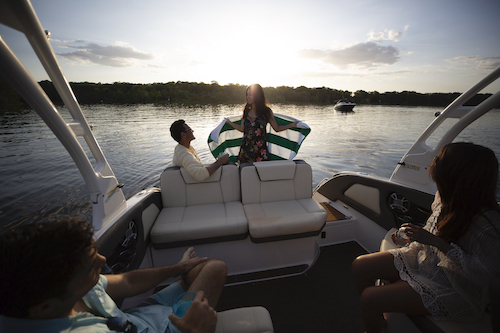
The first step in the boat-buying process is also the most important—determining exactly what type of craft will best fit the needs and wants of both yourself and those you plan to bring along for the ride. Those needs and wants are typically determined by what type of activities you want to pursue on the water.
Think about the reasons you want to be on the water…and then narrow your choices accordingly. Our Boat Finder Tool can help with this. You may also be interested in learning more upfront about the overall costs of boat ownership .
Costs of Boat Ownership
Before we dive into the details, let's breakdown the process of how to buy a boat step-by-step...
- Choose the right boat type for your needs.
- Decide if you'd like to buy a new or used boat .
- Ensure the boat you're buying is a certified boat .
- Determine how much boat you can afford—our boat loan calculator can help.
- Research information about boat financing and how to get a boat loan .
- Shop for your boat—figure out where and when to buy .
- Learn more about boat values and pricing , including how to negotiate your purchase.
- Conduct a sea trial and a marine survey .
- Close the deal—find out more about boat registration , insurance and taxes .
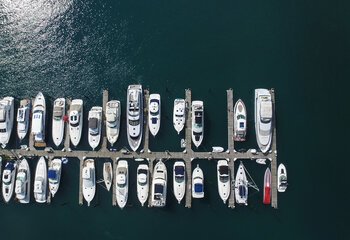
1. Choose the Right Boat Type
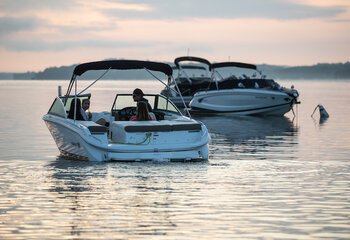
2. Decide to Buy New or Used
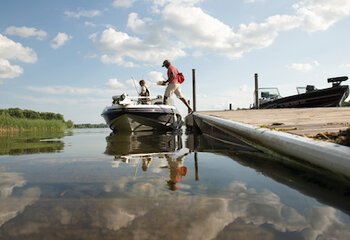
3. Find a Certified Boat
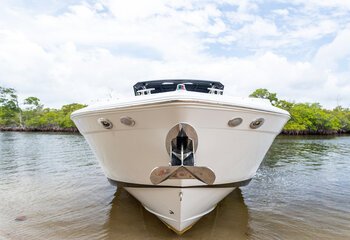
4. Review Boat Financing Options
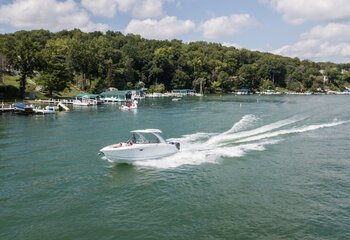
5. Get a Boat Loan
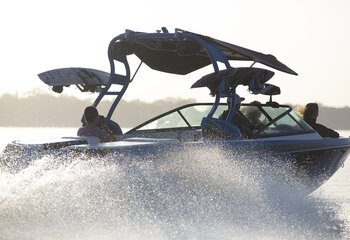
6. Discover Where & When to Buy
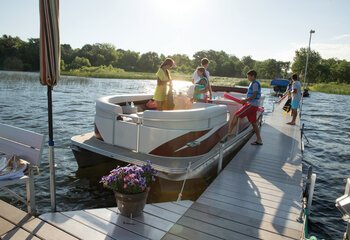
7. Work with a Boat Dealer
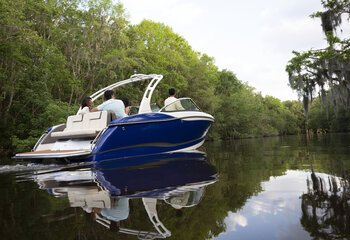
8. Research Boat Values & Prices
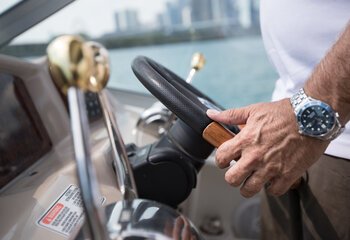

9. Sea Trials & Marine Surveys
Buying your first boat guide.
So you’re ready to take the plunge and buy a boat. Download our step-by-step beginner’s guide to get up to speed on all the basics.
Determine What Type of Boat To Buy
Now that you have decided to embrace the boating lifestyle, you'll want to establish a budget so you can start building and prioritizing your wish list. That budget will likely be a key factor in the decision to buy a new or pre-owned boat. Either way, the considerations for size and type of boat will be the same.
When it comes to determining the right size for your boat, there are a number of factors to consider:
- People: How many people will you regularly have on board? Will you host just your immediate family or will you bring extended family and friends?
- Towing: If you are trailering your boat, keep in mind that the size of boat will directly impact the size of the vehicle needed to tow it.
- Location: Think about where you’ll be using the boat. If you’re planning to boat on larger waterways, then a slightly larger boat with a deeper hull might make more sense. Smaller waterways or shallow water might require a smaller vessel.
- Storage: If you are storing your boat at the marina, boat size will likely impact monthly storage costs. If you are storing it at your personal dock, what space constraints already exist? You’ll also want to talk to your dealer or marina manager about the potential need for winter storage.
Learn more by reading Choosing the Right Boat Type: Buying Guide for Recreational Boating .
Set Your Budget
Boating is more affordable than you think. With an idea of the type of boat you want to purchase, narrow things further with several practical considerations that can help you set your budget.
A new boat has both factory freshness and a warranty; a pre-owned craft may need to be checked out more thoroughly, but allow you to stretch your budget. If you consider all of the weekend activities and vacation expenses a small family can incur throughout the year, boat ownership is quite comparable—especially when you realize that a brand-new entry-level boat can easily be had for $250 to $300 per month. To get a little more boat for the budget, you might also consider buying a pre-owned boat.
Use our Boat Loan Calculator to see how a boat fits into your budget, and be sure to read Costs of Boat Ownership to learn more about the overall costs.
Explore Boat Financing Options
Start Shopping
With a boat and budget in mind, it's time to start the shopping process. Start with a general online search of boat types, then hone in on individual models through manufacturers websites, dealerships, online reviews, and forums. Don’t just rely on the keyboard. You may also have friends or acquaintances with similar types of boats or who enjoy similar activities. Ask them their experiences, and use their firsthand knowledge to your advantage.
Dealership Experience
For many boat buyers, it's important to be able to feel, touch, and see the boat that they are purchasing. Working with a dealer can help make the buying process easy and simple. While you’re comparing boats, don’t forget to compare boat dealers. The quality and location of the dealership is an important part of your boat-buying and ownership experience.
While you’re comparing boats, don’t forget to compare boat dealers. The quality and location of the dealership is an important part of your boat-buying and ownership experience.
Learn More: Certified Dealers Guide
Inspect the Boats
Once you narrow down your search and are seriously considering one particular boat, it’s important to have a thorough inspection of other major components such as the engine, propeller, bilge (inside a boat’s hull), steering system, electrical systems and fuel tank.
Take a test drive or sea trial. Think long term—the boat you test with just two people may handle much differently with a full complement of family and friends. Likewise, that horsepower that seems adequate in a simple trial may not fit the bill down the road.
Marine Surveys
If you aren’t confident in your technical knowledge, you can enlist the help of an independent marine surveyor. Very similar to a home inspector, a surveyor will inspect the boat from top to bottom and inside out so you know exactly what condition the boat is in.
Close the Deal
When it comes to the purchase process, there is more to know than the list price and features of a boat.
Final Costs
Not unlike car buying, there are often a few additional costs not listed on the sticker price. Dealer fees, insurance, registration, accessories, storage and upkeep should all be discussed with the dealer early in your shopping to determine the full cost of boat ownership and to avoid surprises later.
Bells and Whistles
Ask about accessories. Some gear, such as a safety kit, is often included with the purchase of the boat, while other activity-specific accessories might need to be added on to your purchase.
Delivery and Ownership
Find out what to expect after you sign on the dotted line. What is the delivery process? You’ll want a thorough review of the boat’s systems before taking the keys so you have the confidence to operate your boat from day one. You should also ask about the procedure for scheduling maintenance or repairs with the dealer’s shop when the time comes. Get a head start by learning more about the first year of maintenance.
And before you depart on your first outing, find out where you can take a boater-education course. Learning basic seamanship skills and absorbing some local knowledge will give you a greater confidence level once you hit the water. Completion of boater-education courses might also get you a discount on your insurance.
Ownership Guide
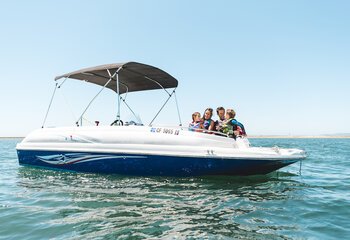
Registering Your Boat
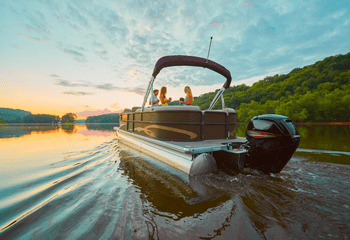
Insuring your Boat
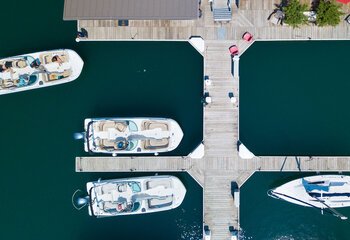
Storing your Boat
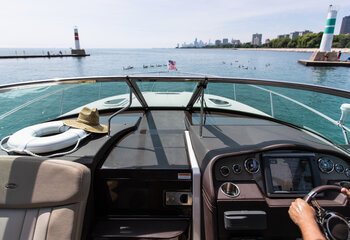
Getting a Boating License
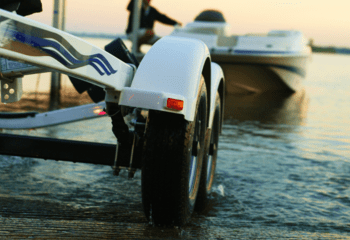
Towing & Trailering Your Boat
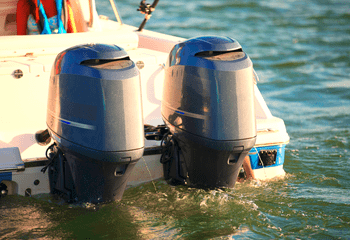
Boat Maintenance
Finally, it's time to enjoy your purchase. Get out on the water and have fun, not just in the immediate future but in the months and years to follow. One key component of that fun is regular maintenance to keep your boat in tiptop running condition, from a regular wash and wax to scheduled maintenance. Another is to expand your boating knowledge, whether through one of many fun programs offered by local dealers or an online resource.
Ignite a lifelong passion for boating…and make memories that will last a lifetime.
Latest Wave of Boating News & Resources
Inspirational stories, how-to articles, and expert tips for new & experienced boaters
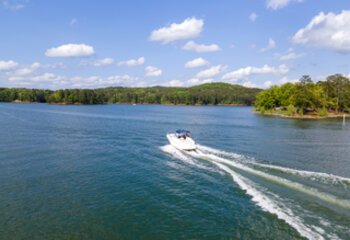
8 Reasons Why Boat Insurance Is Important
Whether you're a seasoned sailor or a weekend enthusiast, prioritizing boat insurance is essential for a worry-free voyage.

Boating Responsibly: Practical Tips for Keeping Our Waterways Clean
In this blog post, we'll explain why it's crucial to avoid littering, prioritize recycling while boating, and provide easy tips to ensure you're prepared for responsible waste management on every voyage.

10 Reasons Boating is Good for Mental Health
Boating isn't just an enjoyable way to spend a day; it's also a powerful way to improve your mental health.
Join Our Newsletter!
Get community news, buying bargains, and how-to guides at your fingertips.
- New Sailboats
- Sailboats 21-30ft
- Sailboats 31-35ft
- Sailboats 36-40ft
- Sailboats Over 40ft
- Sailboats Under 21feet
- used_sailboats
- Apps and Computer Programs
- Communications
- Fishfinders
- Handheld Electronics
- Plotters MFDS Rradar
- Wind, Speed & Depth Instruments
- Anchoring Mooring
- Running Rigging
- Sails Canvas
- Standing Rigging
- Diesel Engines
- Off Grid Energy
- Cleaning Waxing
- DIY Projects
- Repair, Tools & Materials
- Spare Parts
- Tools & Gadgets
- Cabin Comfort
- Ventilation
- Footwear Apparel
- Foul Weather Gear
- Mailport & PS Advisor
- Inside Practical Sailor Blog
- Activate My Web Access
- Reset Password
- Customer Service

- Free Newsletter

Pearson Rhodes 41/Rhodes Bounty II Used Sailboat Review

Hallberg Rassy 42 Used Sailboat Review

How to Perform Your Own Pre-Buy Inspection

Beneteau 323 Used Boat Review

How Does the Gulf Stream Influence our Weather?

Can You Run a Marine Air-Conditioner on Battery Power?

Preparing Yourself for Solo Sailing

Your New Feature-Packed VHF Radio

Practical Sailor Classic: The Load on Your Rode

Anchor Rodes for Smaller Sailboats

Ground Tackle Inspection Tips

Shoe Goo II Excels for Quick Sail Repairs

What Oil Analysis Reveals About Your Engine

An Unusual Sailboat Shines a Light On A Sustainable Future

Is It Time to Get an Electric Dinghy Motor?

Bottom Paint 30-Month Update

Battle of the Teak Cleaners — Snappy Teak-Nu vs. Star Brite

New Seacocks for the Offshore Sailor

Bottom Paint Care

Are E-bikes Worth the Extra Weight and Cost?

How to Handle the Head

How to Select Crew for a Passage or Delivery

Preparing A Boat to Sail Solo

Re-sealing the Seams on Waterproof Fabrics

Waxing and Polishing Your Boat

Reducing Engine Room Noise

Tricks and Tips to Forming Do-it-yourself Rigging Terminals

Marine Toilet Maintenance Tips

Learning to Live with Plastic Boat Bits
- Sailboat Reviews
DIY Survey Checklist for Used-boat Buying
Before hiring a professional surveyor, look for these danger signs..

Photos by Frank Lanier
Boat buying is an exciting, maddening exercise that can test the tolerance of even the most patient sailor. Much of the maddening part has to do with trying to ferret out a boats problems before buying (and making them your own). Obviously, you should consult a reputable surveyor prior to purchase, but who can afford to have every promising boat surveyed?
The easiest way to narrow down the list of potential deals is by doing your own pre-survey inspection. Below are some of the major areas of boat inspection any buyer would want to become intimate with, as well as some common problems associated with each.
As the single most expensive piece of gear onboard, the engine deserves particular scrutiny. It is a hard lesson to learn that after purchasing that deal of a lifetime, the boat requires an engine rebuild or replacement.
How an engine looks can offer valuable clues about its overall condition. Thats not to say a shiny, seemingly new engine will be trouble free, but if its a real mess on the outside, chances are the owner hasn’t exactly been a stickler for regularly scheduled maintenance.
Start by looking for obvious problems such as leaks, excessive rust, broken or missing components, and other signs of neglect. For freshwater-cooled systems, check the coolant level and properties. Lack of antifreeze should raise red flags (due to possible leaks) as should coolant with a rusty color or an unusual amount of solids.
A lot can be told by simply pulling the dipstick and checking the oil. A slightly low level might be OK, but higher than normal levels could indicate trouble, particularly if milky or frothy; both are an indication that water, antifreeze, or transmission fluid is present, signs you could be facing anything from a blown gasket to a cracked block.
Rub a little engine oil between your fingers. If it feels abrasive or has a burnt odor, be concerned about bearing wear; however, it could also simply mean the oil hasn’t been changed regularly. Wipe the dipstick on a clean white cloth or napkin. Oil thats thick initially, but then starts to spread out over the cloth is an indication of fuel contamination.
Taking oil samples to a lab for testing is a more scientific way to analyze oil condition, but its normally most useful in tracking issues over the engines lifetime, rather than for spot-checking. Still, a one-shot oil analysis can show unusual wear and the presence of water, antifreeze, or diesel fuel. Think of it as a blood test for the engine-it may not predict a heart attack, but it can indicate the high cholesterol that could lead to engine failure.
As for transmissions and reduction gears, dark and sluggish fluid or oil with a burned smell may indicate drive cone problems and a costly rebuild in the near future. After running the engine in gear a bit, use the dipstick to get a transmission fluid sample. Put this on a piece of paper, and inspect it under a bright light or in direct sunlight for metallic specks-a sign of significant transmission wear. Inserting a long, thin magnet (the kind mechanics use to retrieve dropped bolts) through the dipstick opening and sweeping the bottom of the gearbox may produce interesting results as well.
Note how difficult the engine is to start. Depending on whether its gas or diesel, hard starting could be a sign of weak batteries, faulty plugs, or even a bad fuel pump.
Does it run smoothly at idle and under load, or does it idle unevenly and stall out when placed in gear? Rough running can be caused by anything from clogged fuel filters to compression problems, and engines idling at more than 800 rpm may have been intentionally set to idle high to mask problems.
Verify proper oil pressure and operating temperature while the engine is running. Low oil pressure could be due to anything from faulty oil pumps to cam bearing failure. High water temperatures may be something as simple as a bad impeller, but could also be caused by corroded manifolds or exhaust risers.
Finally, read the smoke signals the engine is sending. A well-maintained engine may smoke when initially cranked or while idling, but not when warmed up or under load. Smoke color can also provide an indication of problems (blue for burning oil, black for incomplete combustion, white for water vapor, etc.).
Bottom line: Remember that hour meters mean nothing (they can easily be swapped out by an unscrupulous seller) and that an owner should eagerly provide invoices if claiming overhauls or major work has been done. Engines are a big-ticket item, so always weigh the cost of repair or replacement versus walking away.
Water intrusion into cored decking likely causes more boat damage every year than sinkings, groundings, and fires combined. Cored construction simply describes an inner and outer skin of fiberglass with some other material sandwiched between them. Most all decks will be cored, typically with end-grain balsa, plywood, or maybe one of the more high-tech foam variations.
The prime directive with cored construction is keeping water out. Wet wood coring can rot, allowing the cored deck to separate, drastically reducing structural integrity. Long-term water exposure causes problems with foam-cored decks as well – core separation, freeze damage (due to expansion and contraction), and even disintegration in some cases.
Moisture intrusion into cored decking is typically caused by a combination of failed caulking and improper installation of deck-mounted hardware (cleats, lifeline stanchions, winches, etc.). Any penetration into a cored panel must be properly sealed to prevent water entry and the damage it can cause.
The first step (literally) in finding deck problems can be as simple as walking on the suspicious spots. Soft spots, oil-canning (flexing), or even water squishing from deck fittings are all indicators of a potentially expensive repair. Drips and brownish stains belowdecks are also common signs of water-soaked decks and rotting core.
Sound out the decks by tapping them with a small, plastic-headed hammer or the end of screwdriver handle. Sharp, crisp sounds while tapping are what you want, while dull thuds can be an indication of delamination. Moisture meters such as those available from JR Overseas ( www.jroverseas.com ) are also a helpful tool for sniffing out soggy decks.
Repair options are based on the cores condition, which is determined by taking a core sample (ideally by drilling a small hole in an inconspicuous place from the inside) and looking for moisture or rot. If the coring is rotten or damaged, it must be replaced. If wet, but not damaged and there is no delamination, attempts to dry out the core can be made. Just keep in mind that it is very difficult to remove all water and that any remaining moisture will likely cause future problems. Core replacement is the only sure cure.
Bottom line: While repair costs will be directly related to the size of the delaminated area, even a minor core replacement is a time-consuming project. If faced with a large amount of deck repair, move on to the next boat or be prepared to expend a significant amount of time, money, and effort to make it right.

except where noted
Standing rigging
Most sailors immediately think wire when they hear the term standing rigging, but thats only one part of the story. Your pre-survey inspection should encompass several different components, from chainplates and turnbuckles to cotter pins and terminal ends. Here are three primary standing rigging components along with possible issues to watch out for.
Wire: Broken yarns or strands (aka fishhooks) are a clear indication that rigging wire is nearing the end of its service life, even if the other strands appear good. You can check for broken strands by wrapping toilet paper around the wire and carefully running it up and down while looking for snags or shredding of the paper.
Nicks and scratches that affect multiple strands or one strand deeply should also be noted as possible cause for replacement, as should kinks, flat spots, proud strands and corrosion, particularly where the wire enters a swage fitting.
Floppy shrouds or stays should also be inspected to determine the cause of the looseness, which can indicate anything from a much needed rig tune-up to a failed mast step.
Terminal fittings: Of the various wire terminal fittings found on sailboats, swage fittings are the most common source of terminal failures.
Each should be checked carefully for signs of fatigue, proud strands (a common indication of broken strands in the swage), cracks, and corrosion. A small, handheld magnifying glass can be very helpful during this inspection. Pay close attention to lower terminals, which are particularly susceptible to corrosion as a result of salt-laden water running down the wire and inside the fitting.
Bent or banana-shaped fittings (the result of improper compression of the fitting onto the wire) are also items of concern that will need to be addressed.
Chainplates: Chainplates should be checked carefully for issues such as movement, rust, cracks, deformation of the clevis pin hole, and improper lead angle. Chainplates that penetrate the deck will often leak (due to movement and/or caulking failure), and the damage this causes, both to the interior of the vessel and the chainplate itself, can be significant.
Where chainplates are bolted to a bulkhead or other interior structure, look for discoloration, delamination, and rot due to water intrusion. Chainplates can also be compromised due to crevice corrosion, even though the metal above and below the deck appears to be in excellent condition. Crevice corrosion occurs when stainless steel is continually exposed to stagnant, anaerobic water, such as that found in a saturated wood or cored deck. This is one reason why chainplates that are glassed in or otherwise inaccessible for routine inspection are undesirable.
Bottom line: While the life expectancy of wire rigging is determined by a myriad of factors (where the vessel is located, type of stainless, amount of use, etc.), the general rule of thumb is that it should be replaced every eight to 10 years, sooner if extenuating circumstances such as offshore passages, extended cruising, racing, etc, are in the mix. While an owner may offer assurances or hazy recollections of rigging replacement, unless these improvements are properly documented, the best policy is to assume the rigging is original and plan your purchase strategy accordingly.
While steel hulls rust and wood hulls rot, blisters are what make a fiberglass boat owners hair stand on end. The Cliffs Notes version of how blisters form is simple: Water-soluble chemicals inside the laminate exert an osmotic pull on water molecules outside the hull, drawing them through the gelcoat. Once inside, the water molecules and soluble chemicals join to create a solution with larger molecules that are unable to pass back though the gelcoat. As water molecules continue to enter, pressure increases to the point that the gelcoat is pushed outward, forming a blister.
Some makes and models seem to be more susceptible to blistering than others (presumably due to factors ranging from resins used to layup schedules), but all fiberglass boats are at some risk. Location also plays a factor in some cases (i.e. relocating a vessel from cool to tropical waters, fresh to salt, etc).
The best time to spot blisters is just after the boat is hauled, preferably after the hull has been power washed and is still wet. Blisters can depressurize in a matter of hours once the vessel is hauled (minutes in some cases), making them all but impossible to spot (something to consider if inspecting a boat thats been hauled for a while).
Blisters will typically appear as circular bumps or dome-like protrusions while sighting along the hull. Sometimes water trapped between the bottom paint and gelcoat forms bumps that can be mistaken for blisters. With the owners permission, try pressing a suspected blister with a rubber gloved finger (wear goggles, as they can be under considerable pressure). If the fluid that comes out has a chemical smell, chances are its a blister.
Although hull blisters are often viewed with much dread, finding one or two blisters on an older vessel is no more serious than the occasional gouge to the hull. In these cases, spot treatment of individual blisters as they occur (grinding out to good material, barrier coating, and filling in and fairing with a suitable epoxy mixture) will normally suffice.
Far worse is the dreaded pimple rash or boat pox, where the entire bottom is covered with hundreds or thousands of blisters. Repairs in this case can involve removal of the entire gelcoat and the outermost skin-out mat to reach good laminate, then adding additional laminate to return the hull to original strength. Its an expensive repair that many yards will gladly perform, but rarely guarantee will prevent future blister formation.
Bottom line: Although rarely structurally significant, blisters may very well have a negative impact on a vessels resale value, depending on the knowledge and perceptions of a potential buyer.
Electrical systems
After years of additions, removals, misguided MacGyver-like installations, and overall abuse, probably no other system harbors greater potential for starting a fire on a used boat than the electrical system. This is just one reason both DC and AC systems deserve a thorough inspection.
Start with the batteries, which should be located in liquid tight / acid-proof containers (to contain electrolyte spills) and secured against movement (no more than one inch in any direction). Be on the lookout for equipment hard-wired without any fuse directly to the battery (a potential fire hazard) as well as crowded post syndrome (more than four wires connected to a single battery post).
Verify AC wiring is multi-strand, marine grade wire, not residential style, solid strand wire (aka ROMEX). Solid wire is not recommended for use onboard, as it is susceptible to breakage due to vibration. Your inspection should also verify that AC outlets located in the galley, head, machinery spaces, and on all weather decks are protected with ground-fault circuit interrupt (GFCI), another important safety requirement.
Check the condition of wire runs for both AC and DC systems. They should be neat, well organized, and labeled. Problems include unsupported wires, dead ends (cut wires no longer in use), corrosion, and lack of chafe protection (especially where wires pass through a bulkhead).
Youll also want to keep an eye out for electrical tape joints and household twist-on type connectors, two sure signs that Jethro has been doing a little weekend electrical work.
Bottom line: If the electrical systems are maxed out or rife with problems, play it safe by getting an estimate to make it right from a competent marine electrician before negotiating with the owner.
The more you know about potential problems and how to spot them, the more comfortable and productive your boat-buying experience will be. While the above inspection list can’t replace the practiced eye of a professional marine surveyor, it can help the average Joe make an informed decision on whether to pass or pursue the purchase of that potential dream boat.
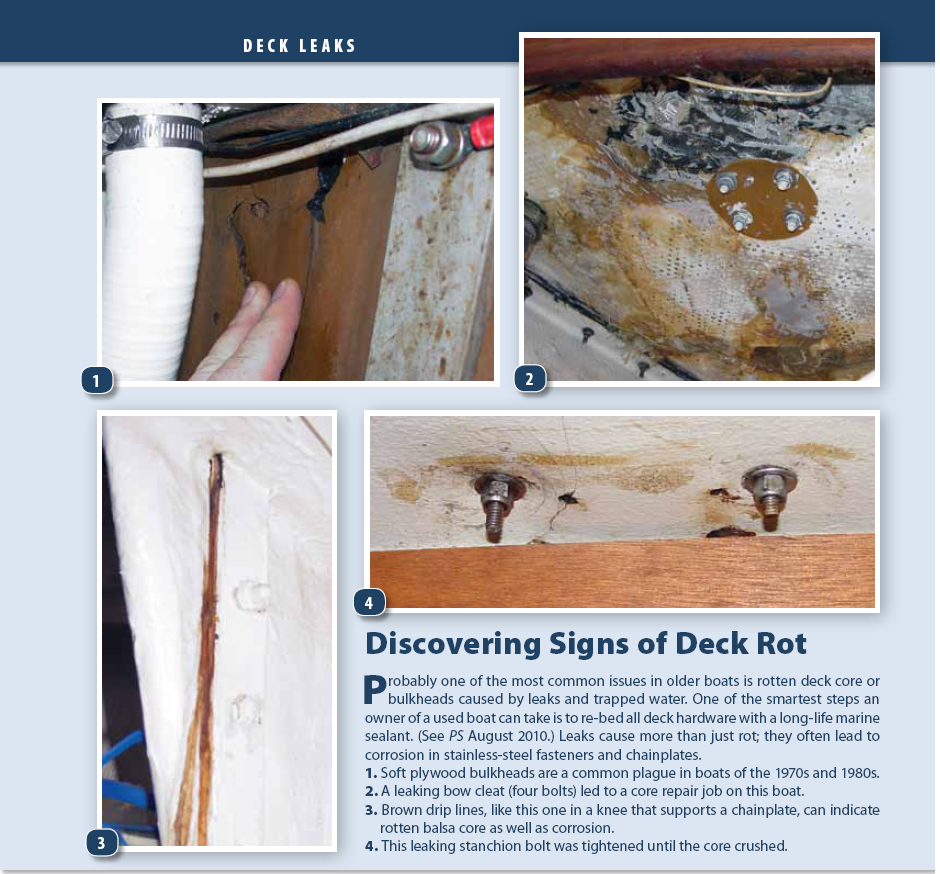
- Society of Accredited Marine Surveyors
- National Association of Marine Surveyors
- “Inspecting the Aging Sailboat,” by Don Casey
RELATED ARTICLES MORE FROM AUTHOR
You made a great point when you said that I should be on the lookout for any boats with some amateurishly fixed wiring. What with how old some used boats can be someone may have thought it better to fix old electrical components themselves rather than hire a professional which could be a potential hazard. I’m buying a boat for our family trips, and since kids will often be on board I wouldn’t want any wiring to stick out and potentially harm them or even worse, start a fire on the boat. Hopefully, I can find a good dealer that will provide me with quality used boats for sale where I won’t have to worry about matters like that.
Thanks for the informative article, Darrell.
LEAVE A REPLY Cancel reply
Log in to leave a comment
Latest Videos

What Is The Best Folding Bike For Your Sailboat?

The No Expense Spared Antigua 60 Cruising Sailboat Soolaimon

How To Buy Sails – With Joe Cooper

How much does a boat cost to purchase and own?
Images by GettyImages; Illustration by Hunter Newton/Bankrate
Key takeaways
- A boat from the last 10 years of models costs an average of $47,000, while basic models can run around $1,000 or less and yachts can go into the millions of dollars.
- Annual maintenance for the boat costs 10 percent of the boat price on average, but you’ll also have to consider other costs like insurance, storage/mooring, fuel, registration and repairs, as some examples.
- Make sure to choose the boat that works for your budget, usage needs and lifestyle.
- You can find financing through boat, personal or dealership loans.
If you love cruising the open waters, fishing or just docking-and-dining, buying a boat may seem like a great idea. While boat costs vary significantly, you can expect to pay anywhere from $15,000 to $75,000 for the average new vessel, and upwards of $100,000 for a more luxurious model.
Taking out a boat loan can make it easier for you to finance your purchase. However, there is more to the cost of owning a boat than the initial price tag. You must also consider the maintenance costs, boat insurance, fuel costs and potential taxes.
How much does a boat cost?
Boat prices can vary widely depending on if it’s new or what used condition it is in. The type of boat can also affect price drastically. Plus, market conditions can affect boat pricing, much like cars.
For instance, according to J.D. Power , the average retail price of the previous 10 model years for outboard boats was about $47,000 at the end of 2023. At the end of 2021, it was about $53,500. Meanwhile, the last ten model years for inboard boats saw an average price of about $350,000 at the end of 2023, down about $20,000 from two years prior.
How does the type of boat I get impact costs?
The cost of owning a boat differs widely depending on type. For instance, a larger boat will naturally have higher fuel costs to run. Storing a larger boat may also be more complex and costly.
The more expensive and feature-heavy your boat, the more it will cost to insure it. For instance, Nationwide states that faster boats often cost more to insure due to the increased risk. The length, age and type of the boat can also affect how much insurance the boat needs. Your insurance can even be dependent on where you use the boat. Lakes, bays, oceans and rivers all present different safety risks.
Further, a larger and more technologically complex boat could mean higher maintenance and repair costs. There are simply more parts that could break.
Bigger and more expensive boats may also require larger loans and longer loan terms to afford. You will pay more in interest to finance the boat in the long run.
Average boat prices in 2024
Jon boats are among the most cost-effective boat models, while yachts and catamarans are among the most expensive ones.
Affording a boat
The best time to buy a boat is typically in the fall. Most manufacturers start advertising discounts in September or October and continue to do so into the winter months. Purchasing your boat during the off-season could help you cut costs significantly and take on less or no debt.
Even if you find a boat at a discounted price or buy the boat used , you may need help financing it. After all, midsized boats often cost around $30,000, which isn’t exactly pocket change. If you need to borrow money to cover the cost of your boat, there are several options.
The most popular ways to finance your boat are through a boat loan, a personal loan or financing through a dealership.
- Boat loan: These personal loans are designed specifically with purchasing a boat in mind. They typically come with fixed rates so you make the same boat loan payment each month and may use the boat itself as collateral if the loan is secured.
- Personal loan : These fixed-rate installment loans can be used for any purpose, including purchasing a boat. Personal loans tend to be unsecured, so you may not have to use the boat as collateral.
- Dealership loan : These are boat loans that are offered right through a dealership and are convenient because you don’t have to choose your own boat loan lender . However, they may have higher rates , longer terms and require a larger down payment.
Other boat costs to consider
When you buy a boat, you have to consider boat costs like maintenance, potential repairs and the cost of fueling and operating a boat.
Additional costs associated with boat ownership include the cost of storing your boat, the cost of a trailer, safety necessities and miscellaneous items such as water sports equipment.
Boat maintenance and repair costs
Typically, annual boat maintenance costs about 10 percent of the cost of the boat itself. For example, a boat that cost $20,000 to purchase would cost roughly $2,000 a year to maintain.
Examples of typical boat maintenance include:
- Painting the hull.
- Cleaning the deck.
- Replacing broken or worn down parts.
- Winterizing the boat to protect it from the elements during the off-season.
Like cars, boats require regular maintenance to reduce wear and tear.
Fuel and operating costs
You must also consider fuel costs, especially if you have a larger boat. Smaller boats typically just take regular or premium gasoline, while larger vessels may require diesel, which is more expensive.
You can avoid fuel costs if you get a sailboat, which is entirely wind-powered, but most other boats require fuel. You should research the fuel needs of the boat you want to buy before making a purchase.
Additional operating costs for a boat include oil changes, batteries, a pump and lights. Just like a vehicle, these elements should be checked and replaced regularly.
Boat insurance, taxes, certifications and registrations
When you buy a boat, you also have to get boat insurance, get your boat registered and potentially get certified to drive it, depending on the state you live in. Some states also charge boat taxes, so research your local requirements before buying a boat.Here is a breakdown of these costs:
- Boat insurance: It typically costs around 1 to 5 percent of the boat’s value. So, using the example above, the average annual cost of insurance for a $20,000 boat would be between $200 and $1,000 a year.
- Boat taxes: They are required in some states. If your state charges a boat tax, you will have to pay it once a year. There may also be a one-time sales tax when you purchase.
- Certifications and registration: Depending on state requirements, you may need to pay for boat registration, including annual renewal. Your state may also require that you take safety certification courses to operate the boat.
Boating classes
In addition to the certification courses your state may require, you can take a wide variety of boating classes. Formal training with your boat may help lower your insurance payments, but you will also have to budget for course fees. It can be a good investment. Knowing as much as possible about using the boat helps keep you or anyone you take on the boat safe.
If you take boating safety courses through your state or the federal government, fees often range from about $10 to $40 per class.
Beyond introductory and basic safety courses, you might also look into specialized training. You can find courses on navigation, GPS use or waterfowl hunting safety. You might also need specialized training based on the type of boat you get, such as a sailing course if you get a sailboat.
Specialized boating courses might range from $45 from a single-day, online course to far more for a curriculum that’s weeks long. There is also the option for private courses that can happen right on your own boat, but these can run around $500 for a few hours.
Storage and mooring
An important but often overlooked element of owning a boat is properly storing it. Most people do not use their boat year-round, and you have to have somewhere to store your boat during the winter months.
There are a variety of boat storage options . Indoor storage is more expensive because it offers tighter security and you do not have to worry about winterizing the boat to protect it from the elements. Outdoor storage is more cost-effective and can be more convenient in certain climates, but since your boat will be exposed, you’ll likely spend more on maintenance to keep it in good shape.
Storing your boat in your garage or driveway is likely the cheapest option. However, you will likely have to buy a trailer and winterize the boat. Note that Homeowners Associations sometimes have rules about parking boats in driveways, so make sure you are allowed to do so before settling on this option.
Here is a pricing breakdown of the most common boat storage options:
Necessities
In order to get your boat to the water, you need to have a boat trailer and a vehicle that can tow it, such as a truck. These costs can vary depending on the size of your boat.
A boat trailer can range from $700 to over $10,000. In addition to a trailer and a towing vehicle, you must invest in your boat’s required safety equipment. These include:
- A fire extinguisher.
- Enough life jackets for every passenger.
- A flotation device.
- A visual signaling device.
- A sound signaling device.
The exact safety equipment you need can vary by state, but these are the basics.
Having a medical kit and flashlight is also a good idea. Depending on the size of your boat, you may want paddles on board in case your engine quits.
Additional cost considerations
Once you buy your boat, there will inevitably be accessories you want to splurge on that aren’t strictly required.
You may want to invest in water sports equipment, dry bags to keep your valuables safe, waterproof electronics, fishing equipment or other items that make boating more pleasurable. Before shopping, set a budget to limit your spending.
Tips for saving money on boat costs
If you really want to spend your weekends out on the water but don’t have the funds for luxury boating, there are some ways you can reduce boat costs:
- If you find yourself strapped for cash, consider a smaller boat like a jon boat, fishing boat or speedboat.
- To reduce the cost of owning a boat, consider buying a used boat in good condition. For instance, a new current-year Tahoe T16 bowrider is about $27,000. The same model a few years older is about $19,000.
- Buy the boat off-season in fall or winter.
- If you’re taking out a loan, shop around for the best rates, even if that means not taking the loan from the dealership.
- You can also avoid paying interest on a loan by saving for the boat. It’s a luxury purchase and not an emergency. Some split the cost with friends or family and share the boat.
- Use your local state programs for courses and certifications. They tend to be much more affordable than private lessons.
- Work with your insurance for any discounts, such as getting better rates if you take a boater safety course. A clean boating record can mean cheaper insurance. Choose the types of coverage, limits and deductibles that make sense for your boat and budget.
- If you can, store the boat somewhere on your own property to save on marina or storage fees.
- Keep up on regular boat maintenance and care to reduce the risk of costly repairs.
- Consider fuel costs. Larger boats may need more expensive diesel fuel. If you want to really save on fuel, opt for a sailboat.
- See if you can get boat accessories and equipment, such as trailers, used and in good condition or on sale.
- Renting a boat can get you out on the water without the added costs of storage and upkeep.
The bottom line
Buying a boat is an exciting adventure, but it is also costly and time-consuming. There are so many extra boat costs beyond the buying price. You must stay on top of maintenance and repairs to keep your investment ship-shape.
Before buying a boat, consider all these costs and write a cost estimate/yearly budget. It is important to ensure you can handle all of the costs associated with having a boat before buying one.
Choosing a financing option like a boat loan, personal loan, or dealership financing could help you plan some of the costs. However, you can avoid taking out a loan by saving up instead, buying a used boat for a lesser cost or splitting the cost and sharing the boat with a trusted friend or family member. You might also look into renting a boat if owning a boat is too expensive.
Whichever option you choose, make sure that you do your research and come up with a plan before making any decisions.


- Weather
Search location by ZIP code
In boston harbor, boat-buying experiences can fit many different budgets.
Boston Boatworks crafts high-end yachts and a local organization teaches young students the art of boat building.
- Copy Link Copy {copyShortcut} to copy Link copied!

GET LOCAL BREAKING NEWS ALERTS
The latest breaking updates, delivered straight to your email inbox.
Boston Boatworks is building Ocean-Worthy Yachts in Charlestown, on the Boston Harbor. For over 25 years, the company has been an innovating force in the use of composite engineering and high-strength construction. Currently, they are in the process of releasing a new signature line of “BB” boats based on a Zurn Yacht design and interiors from the international luxury powerhouse Winch Design .
Community Boat Building strives to bring “real-world experience and academic skills” together through boat building. This is done through a close relationship with public schools in Boston and the surrounding area, offering boat building as part of the in-school curriculum. Students get to name and ride their completed vessels before they are sold , with proceeds supporting the organization’s mission.

- Find A School
- Certifications
- North U Sail Trim
- Inside Sailing with Peter Isler
- Docking Made Easy
- Study Quizzes
- Bite-sized Lessons
- Fun Quizzes
- Sailing Challenge

Taking Your Yacht Abroad For The First Time
By: Sue Richards Editor, Noonsite.com Cruising Tips , Destinations , Inside Sailing , Partners , Sailing Tips
If only sailing to a foreign country was as easy as taking a flight. Forms to fill in on the aircraft, passport control and customs all in the airport on arrival and nothing to pay. Unfortunately, the process for foreign recreational craft and their crew arriving in a foreign port is way more complex, so understandably, the thought of casting off the dock lines and venturing abroad can feel a little daunting. Not only does it mean you have to check out of your own country and familiarise yourself with the various processes involved, but you also need to fully understand what the authorities in the country you plan to sail to will expect (likely quite different to that of your home country).
CONTENTS OF THIS ARTICLE
- EVERY COUNTRY IS DIFFERENT
- GETTING ORGANISED
- WHERE TO GO FOR RESEARCH
- CLEARANCE SUMMARY CHECKLIST
Every Country Is Different
The USA has an efficient clearance system for recreational craft that in most cases is straightforward, can be done electronically and doesn’t require any “leg-work”. Unfortunately, the same cannot be said for the majority of other countries.
While the authorities that deal with yacht clearance are pretty standard, no two countries have the same exit and entry procedures. Even in the Caribbean, where a number of the island nations use the same advance online clearance system ( SailClear.com ), some countries are resistant to going digital and prefer to stick to the old school of form-filling.
There are countries that operate small craft clearance strictly by the book and want yachts to clear in as soon as they arrive and follow the rules or face severe fines ( Australia for example). Other places are happy for yachts to wait until the next working day to clear in (or if arriving on a Saturday – wait until the Monday).

While it’s true there are still some countries that permit yachts to turn up from abroad unannounced (the Dominican Republic and the Azores for example), more and more countries are introducing advance registration systems with some form of pre-arrival notification. For example, Bermuda now has a pre-arrival questionnaire which needs to be completed online and mainland Ecuador requires a sailing permit ( Autografo ) to be applied for 30 days in advance of arrival.
Getting Organised
There are many things you can do in advance to prepare yourself for cruising abroad. Getting all your paperwork in order (for both the boat and the crew) is a good start. Make hard copies of your precious documents (like boat registration and insurance), even though they may be digital, so officials have something to see. Have extra copies for them to handle and keep if necessary. Organise everything in a suitable wallet or document holder that can cope with being dragged ashore in the dinghy countless times.
Research what other documents you might need for your boat, plus those you need for your crew from passports and visas to vaccinations, health insurance and licenses. Your countries’ foreign office will have useful Immigration information for the country you want to sail to, but it’s important to bear in mind that these rules often differ for crew on visiting yachts, as do rules for crew arriving by plane and departing by yacht (or vice versa).
Find out what the authorities want you to do in advance (if anything) and what procedures they will follow on arrival. Some countries want visiting yachts to obtain a cruising permit, and many require these to be applied for and obtained in advance. This can take time, so start researching early just to be on the safe side. Other countries (like some of the Caribbean islands as previously mentioned) have online forms that you can complete prior to arrival to speed up the clearance process once you get there. A few countries want pre-application before they will grant you permission to enter, which can also be denied, so be meticulous and find out and record everything that’s required.

Where To Go For Research
Noonsite.com is the only place on the web dedicated to cruising sailors who are planning a foreign voyage and need to find out what formalities to expect in the various countries en-route. Noonsite has been supporting cruising sailors around the world for over 20 years and it is the best place to start researching the next country you plan to visit. Simply select the country you wish to research and icons guide you to the procedures and requirements of customs, immigration and other authorities – clearly laid out and regularly updated with useful links to official websites. Using Noonsite saves you hours of trawling the web looking for information (much of which is not readily published online by the country authorities).
Other sources for finding out the latest information are cruiser Facebook pages and simply talking to cruisers in your departure port who may well have visited your intended destination and can give hard-earned advice.
Cruising guides are very useful for getting a quick overview of a place and detailed pilotage, however the entry procedures quickly date. Always check Noonsite for the latest details and ask their editorial team if you want confirmation.
Over the next few months, as the experts for country formalities worldwide, Noonsite will be bringing you a detailed step-by-step guide to venturing abroad in your boat and how best to deal with foreign formalities. All the points in this introductory article will be covered in detail plus additional topics such as planning and paperwork, boat equipment, the mechanics of the arrival and departure process, cruising to the EU, top 5 destinations from the US and how to research country information on Noonsite .

Clearance Summary Checklist
Here is a quick summary of how to prepare for and carry out foreign clearance (all of which will be discussed in depth in subsequent articles):
✓ Make sure your boat registration is up to date and will be in date for the duration of your time abroad. If you need to renew it, be sure to do this early so there is no lapse in coverage. Boat registration renewal can mostly be done online. If you boat registration has expired you will be denied entry into a foreign country and risk legal consequences. See further information on the US Vessel Registrar website .
✓ Plan ahead well in advance , particularly for visas and/or cruising permits if needed, some can take many weeks to obtain.
✓ Always make sure you get an exit zarpe showing the date and port of departure when you clear out of your home country and any subsequent countries. The authorities in the next country you visit will want to see this.
✓ Do careful research to make sure there aren’t any pre-arrival notifications or paperwork you need to complete prior to arrival.
✓ Does the country you want to visit demand you use an agent? If not, do you feel you need one? This will have to be arranged in advance.
✓ Know the ports of entry in the country you want to visit and determine the best one for you.
✓ Have some foreign currency for paying for clearance – there may not be banks near the port of entry or arrival officials may not permit you to visit an ATM to get money.

Fly the Q flag when entering the territorial waters of the foreign country and don’t take this down until you have completed Customs clearance.
✓ Fly the Q flag when entering the territorial waters of the foreign country and don’t take this down until you have completed Customs clearance. It should then be replaced with the country courtesy flag. ( Purchase Courtesy Flags Here ).
✓ Prepare to visit Customs, Immigration, Port Authority and in some ports Quarantine/Biosecurity. You may be lucky and all the authorities will be housed in one building, or you may have to travel all over town by foot or taxi to visit all the offices.
✓ Enquire about fees and what you are expected to pay on arrival, and any on departure, and be sure to get a receipt. You may find you can clear in and out at the same time, depending on how long you intend to stay.
✓ Dress smartly for clearance and be courteous and patient. Clearance can take anything from half an hour to all day or even several days – depending on the country.
✓ Get a boat stamp – with your boat name/logo and your registration number/homeport etc. This can speed up signing documents and officials love a boat stamp.
✓ Keep all the clearance paperwork and receipts carefully filed away, you may be stopped by the local Coast Guard or marine police once cruising in foreign waters who will want to inspect your entry clearance and boat documents.
✓ Remember all foreign countries have a time limit as to how long you can stay – both for your crew and your boat. Know how long you and your boat have and plan your cruising accordingly. Research the options to extend your stay prior to arrival.
✓ Do your homework and give yourself plenty of time to get organised.
Our next Noonsite article for ASA will look in detail at Destination Planning (including visas, cruising permits, advance notification, ports of entry, security, agents and tips on getting organised). Stay Tuned!

About The Author: Noonsite provides a wealth of knowledge and information for cruisers sailing beyond the horizon. For over 20 years Noonsite has been the trusted source for country entry and exit formalities and ports of entry for private yachts cruising the globe. Led by their experienced editorial team, their worldwide network of cruising experts and marine authorities verify all essential information. As well as formalities, Noonsite has information on all major sea ports for cruising boats worldwide and their marine facilities, plus cruising reports and news.
Noonsite’s cruising resources section has articles and links on a wide range of cruising-related topics, from cruising with kids, to insurance, to piracy and security. The feature sections include “cruising off the beaten path”, “cruising insights” and “portraits of a cruiser”, to name a few. Noonsite is a free resource, however there are various ways to get more out of the site. Free registered members can post comments and feedback on the website and receive notifications of new features, plus see the latest information as and when it’s published. Non-paying members are, however, limited to viewing just 3 country formalities a month. If you are planning a long-distance cruise and want to have unlimited access to all country formalities then taking Noonsite’s Basic Membership option at just $2.99 a month will enable unlimited viewing of the site, plus access to the Noonsite map, which is a great tool for viewing ports of entry, marinas, boatyards and anchorages posted by our users. Noonsite also has a Premium membership option which gives members the ability to download Noonsite information for use offline. Noonsite’s monthly newsletter is packed full of cruising news and reports from around the world and registration is free .
Additional information ab out Noonsite’s history and content can be found here by clicking here >>
Related Posts:

- Learn To Sail
- Mobile Apps
- Online Courses
- Upcoming Courses
- Sailor Resources
- ASA Log Book
- Bite Sized Lessons
- Knots Made Easy
- Catamaran Challenge
- Sailing Vacations
- Sailing Cruises
- Charter Resources
- International Proficiency Certificate
- Find A Charter
- All Articles
- Sailing Tips
- Sailing Terms
- Destinations
- Environmental
- Initiatives
- Instructor Resources
- Become An Instructor
- Become An ASA School
- Member / Instructor Login
- Affiliate Login
You don’t want to buy a Staten Island Ferry boat. Just ask “SNL” funnymen Pete Davidson and Colin Jost (opinion)
- Published: May. 18, 2024, 10:00 a.m.
- Tom Wrobleski | [email protected]
STATEN ISLAND, N.Y. – Sure, it sounds like a great idea.
But you don’t want to buy a Staten Island Ferry vessel.
The city has offered the old Andrew J. Barberi ferryboat for sale at auction. The opening bid is $155,000, which is cheaper than most houses here on Staten Island.
In other words: take our ferry. Please.
It’s easy to imagine all kinds of awesome uses for a decommissioned ferryboat. You could turn the vessel into a restaurant. Or a bar. Or a dance club. A wedding reception hall. A really cool art gallery or music venue.
What a unique space!
But you better read the fine print before making a bid on the Barberi.
The city tells us that while the hull of the Barberi is in good shape, the vessel’s mechanical, propulsion and navigational systems have been stripped out.
So good luck moving this thing anywhere. You’ll likely have to have it towed. And that could be a big expense. As would berthing the Barberi somewhere.
But even if all those systems were still in place, the ferry would have to comply with U.S. Coast Guard regulations in order to sail anywhere. You’d have to have qualified people to pilot it wherever you wanted to take it.
Or you could maybe haul the boat out of the water and ship it someplace by truck or rail. Again, no doubt a big expense, as storing it someplace would be.
Never mind the bad memories associated with the Barberi, which crashed in 2003, killing 11 people and injuring 70 more. The boat was repaired and was put back in service, but that kind of karma is hard to get around.
If you still need convincing, just ask “Saturday Night Live” alums Pete Davidson and Colin Jost about their experience buying an old ferryboat.
The Staten Island-bred pair joined with some investors to buy the old John F. Kennedy ferryboat back in 2022.
They paid $280,000 at auction and planned to turn the boat into a bar, restaurant and entertainment venue.
Bless the boys for wanting to do something so connected to their Island roots, but it soon became obvious that the funnymen were in over their heads with the JFK.

Ferryboat John F. Kennedy, bought by "Saturday Night Live" performers Pete Davidson and Colin Jost, is seen at Caddell Dry Dock in West Brighton. (Tom Wrobleski/Staten Island Advance)
Staten Island Ferry crews claimed that the boat was filled with rats and asbestos.
Then there were all the hidden costs, including refurbishing the boat, mooring it and making it compliant with the Americans With Disabilities Act and other safety codes. That would include the installation of elevators and escalators.
It’s estimated that the undertaking will cost millions of dollars and take a number of years before all is said and done.
That wasn’t the only ferryboat deal to run aground.
In 2012, the old Herbert H. Lehman ferryboat, which had been sold for salvage, sank in the Hudson River after springing a leak.
And if you really want to see what becomes of old Staten Island Ferry vessels, go to the so-called “boat graveyard” off the shores of Travis.

Boat graveyard in Travis (Tom Wrobleski/Staten Island Advance)
Just don’t buy a ferryboat of your own.

Most Popular Stories by Tom Wrobleski
- Live video from the scene as these ‘Blue Bloods’ stars are spotted filming episode on Staten Island street
- ‘Could this be mommy?’ Staten Island woman believes her mom was Paul McCartney-loving Beatles fan captured on
- Tesla worker slept in car at factory to avoid 90-minute commute. He should try getting around Staten Island (
If you purchase a product or register for an account through a link on our site, we may receive compensation. By using this site, you consent to our User Agreement and agree that your clicks, interactions, and personal information may be collected, recorded, and/or stored by us and social media and other third-party partners in accordance with our Privacy Policy.
- Action/Adventure
- Children's/Family
- Documentary/Reality
- Amazon Prime Video

More From Decider

New Shows & Movies To Watch This Weekend: 'Bridgerton' Season 3 on...

Jax Taylor Admits His "Delivery Is Awful" In 'The Valley': "That's One Of...

What Happened to Regé-Jean Page? Did the Duke Bomb His Movie Star Career...

'9-1-1's Malcolm-Jamal Warner On Amir And Bobby, Working With Peter...

'Unfrosted' Has Everyone Wondering "What's The Deal With Jerry Seinfeld?"

Chrissy Teigen Stuns John Legend On 'The Drew Barrymore Show' With Reveal...

Brooke Shields Flashed Her ‘Mother of the Bride’ Co-Star Benjamin...

Andy Cohen Reveals Sarah Jessica Parker's Reaction When He Suggested Rosie...
Share this:.
- Click to share on Facebook (Opens in new window)
- Click to share on Twitter (Opens in new window)
- Click to share on WhatsApp (Opens in new window)
- Click to email a link to a friend (Opens in new window)
- Click to copy URL
AMC’s ‘Goodfellas’ Trigger Warning Due To “Cultural Stereotypes” Sparks Backlash
Where to stream:, ‘the sopranos’ theme writer explains why he’s never watched the show, stream it or skip it: ‘how to become a mob boss’ on netflix, a docuseries that shows how legendary organized crime figures became the big boss, you can now buy tony soprano’s boat “the stugots” for $300k, stream it or skip it: ‘mob wives’ on paramount+, a housewives show where all the women are affiliated with the mafia.
AMC has added a trigger warning to Martin Scorsese ‘s classic film Goodfellas whenever it airs or streams and has been receiving backlash for the move.
The message, which appears on screen to viewers just before the start of the 1990 mob crime thriller, reads: “This film includes language and/or cultural stereotypes that are inconsistent with today’s standards of inclusion and tolerance and may offend some viewers.”
You can view the message below thanks to former New York Post reporter Ken Lovett.
A rep for AMC spoke to our sister site the New York Post and said: “In 2020, we began adding advisories in front of certain films that include racial or cultural references that some viewers might find offensive.”
Prior to Goodfellas , trigger warnings have been added to such films as Gone With the Wind , Goldfinger , Blazing Saddles , and Dumbo .
Now I’ve seen it all. AMC message before the classic film Goodfellas. pic.twitter.com/QxTXXz4tex — ken lovett (@klnynews) May 12, 2024
Some of the celebrities to speak out against trigger warnings recently include Cate Blanchett , Quentin Tarantino , Ian McKellen , Dame Judi Dench , and Ralph Fiennes .
Dench issued a stern message to anyone who needs a trigger warning. “If you’re that sensitive, don’t go to the theater,” she told the Radio Times . “Because you could be very shocked. Where is the surprise of seeing and understanding it in your own way?”
“The f–king political correctness has f–king taken everything away,” said Bo Dietl (who played a police officer in Goodfellas ) to the Post. “This is how life was back then. It was not a clean beautiful thing. You can’t cleanse history. If you want to tell true history, you gotta tell it the way it is.”
Michael Franzese, who portrayed a one-time captain of the Colombo crime family, said he found the message amusing. “We don’t need anyone protecting mob guys. It’s crazy,” he said.
What do you think about this new trigger warning? Let us know in the comments above.

'The Resident's Malcolm-Jamal Warner Says Cast Would Be Open To Returning For A Season 7: "I Think We Would All Jump At The Opportunity"

'Live's Kelly Ripa And Mark Consuelos Learn Why Ankle Socks Are "Canceled" From Gen Z Members Of Their Studio Audience

'Godzilla x Kong: The New Empire' Comes To Digital, But When Will 'Godzilla x Kong' Stream on Max?

PBS's ‘MaryLand’ Introduces ‘Masterpiece’ Fans to the Magical Isle of Man

Stream It Or Skip It: ‘Monster’ on Netflix, a Dialogue-Free Indonesian Horror-Thriller

Is ‘The Iron Claw’ Based on a True Story? Why the Real Von Erich Family Is Even More Tragic Than the Movie

IMAGES
VIDEO
COMMENTS
A sailboat refers to any class and subclass of boat that is designed with one or more masts and rigging system as the main source of propulsion. Sailboats are available in a variety of models and rigs, including racing boats, sloops, schooners, catamarans, trimarans, sailing cruisers, and others. Some of the first sailboats on record date back ...
A charter yacht will endure ten times the wear and tear of a private one, despite being regularly maintained. Never buy an ex-charter yacht without getting a thorough, detailed survey. Buying a yacht new. Before buying a new boat bear in mind you'll need considerable additional kit that's not included.
Tip 2: Focus on the total acquisition costs: the purchase price plus the inevitable refit. A good rule of thumb is to use only half the boat budget to buy the sailboat, then employ the other half for the requisite upgrades. A common boat-buying mistake is not reserving enough money for the overhaul.
106 Sailing Yachts for Sale Worldwide. If you're ready to feel the wind in your hair and the ocean rushing under the keel, then you are ready for a sailing yacht. Northrop & Johnson offers one of the industry's most extensive and comprehensive inventories of sailing yachts for sale. A sailing yacht will be at the top of your list if you ...
World's largest selection of brokerage boats for sale by professional yacht brokers with new, used, sailing, power and super yachts for sale. ... Buying A Yacht. Advice on how to buy your yacht, and how a yacht broker can help you through the complicated transaction. Learn More. Marine Directory. The Boating Yellow Pages. Search for a marine ...
Determining your budget is the first and most critical step when considering buying a sailboat. Sailboats can vary significantly in price, depending on the size, age, and condition. Consider your personal financial situation, including how much you can afford to spend upfront and how much you can afford in ongoing maintenance and operating costs.
Search for everything from motor yachts for sale from renowned Dutch yards including Feadship and Heesen, premium Italian names including Azimut, Sanlorenzo and Benetti, popular British builders Sunseeker and Princess, and American megayachts for sale from US yards such as Westport. Our collection also features sailing yachts for sale from ...
Browse the latest yachts for sale with Burgess. For inspiration, explore our global fleet of quality motor and sailing yachts, or search for a yacht by name. Whether you are a first-time buyer or an experienced owner, speak to our expert brokers today. Tap into our in-depth knowledge to match superyachts for sale to your needs, so that you can ...
The IYC Sales Fleet. With a sales fleet valued over $1 billion, IYC has one of the most varied sales portfolios within yachting. You have the option of choosing from different types of boats, such as sailing boats, motorboats, pre-owned vessels, and brand new models from well-known shipyards and designers of varying sizes.In addition, IYC offers a wide selection of custom designs that are ...
Assume you are going to spend the same amount of money either up front or in the end. IE. You buy a boat for $10K and want a $50K boat, you'll need to put $40 K into it. If you buy a $50K boat and are happy with a $50 K boat, then you won't have to lay out as much cash to get it where you want it.
When you want to buy a yacht, expertise and experience are paramount. Northrop & Johnson's brokers have a unique and in-depth knowledge of the superyacht industry and have an unrivaled reputation for honest dealing. With the industry's most comprehensive database of buyers and sellers, and access to the widest fleet of luxury yachts for ...
Under the £200,000 mark there's not much that's of good quality and ready to go.". In highest demand are second hand yachts suited to living aboard and bluewater cruising and, despite the ...
Browse listings, work with a broker, or attend a boat show. Narrow down your options. Before you buy, conduct a walkaround, a sea trial and a survey. Close the deal. Above: A young woman who is a first time boat buyer stands in front of a marina in Harbour Island, San Diego. Photo via Pond5.
Learn more about boat values and pricing, including how to negotiate your purchase. Conduct a sea trial and a marine survey. Close the deal—find out more about boat registration, insurance and taxes. 1. Choose the Right Boat Type. 2. Decide to Buy New or Used. 3. Find a Certified Boat.
He adds that one benefit to the current flat economy is that it's a good time to pick up a used boat. "Boats are a great value right now, having gone down about 20-25 percent over the last two years," he says. The hardest thing about buying a used fiberglass sailboat is keeping your head straight. With a new boat you (in theory, at least ...
Find the world's largest selection of brokerage boats for sale by professional yacht brokers with new, used, sailing, power and superyachts for sale. ... Whether you're looking to buy a new boat, upgrade your existing one or fund a refit project, it's important to understand the basics behind boat loans and marine mortgages.
Width (Beam) In terms of width (beam) of the boat, you'll want to keep it below 8.5 feet (8'6″ beam max) in order to make it trailerable on public roads without a special permit. Boats with a beam over 9 feet will likely require a special permit to trailer on public roads, in many states.
New and used sailboats and sailing yachts for sale. Yachtall is an online boat market for new and used sailboats, sailing yachts and other boats for sale. You can buy a sailboat from a dealer or from a private person, you can offer your own second hand sailboat or preowned yacht for sale here. Sailboats and sailing yachts of all kinds find here ...
Practical Sailor has been independently testing and reporting on sailboats and sailing gear for more than 50 years. Supported entirely by subscribers, Practical Sailor accepts no advertising. Its independent tests are carried out by experienced sailors and marine industry professionals dedicated to providing objective evaluation and reporting about boats, gear, and the skills required to cross ...
After the release of Part 2. Video course "Captain of your OWN sailboat". The book "Buying a Sailboat from A to Z". Opportunity to win an ocean sailboat (prize budget €35,000) Monthly opportunity to win a trip to Vadim Luppo (journey) Free consultation on buying a sailboat.
Jon boats are among the most cost-effective boat models, while yachts and catamarans are among the most expensive ones. Affording a boat The best time to buy a boat is typically in the fall.
Photo by Lowe Boats. Conclusion. Setting the right price for your used boat requires careful consideration of multiple factors, from depreciation and engine hours to add-on features and location. Boat Trader's Price Checker Tool simplifies this process by providing accurate, real-time market data that includes all these variables.
In Boston Harbor, boat-buying experiences can fit many different budgets. Boston Boatworks crafts high-end yachts and a local organization teaches young students the art of boat building.
Sailing to a foreign country can entail a maze of paperwork and procedures, a stark contrast to the simplicity of air travel. Understanding each destination's unique requirements is paramount and preparation is key when navigating passport control, customs, and regulations demands. Luckily, Noonsite.com is here to offer some guidance on simplifying the intricate process of international sailing.
STATEN ISLAND, N.Y. - Sure, it sounds like a great idea. But you don't want to buy a Staten Island Ferry vessel. The city has offered the old Andrew J. Barberi ferryboat for sale at auction ...
AMC has added a trigger warning to Martin Scorsese's classic film Goodfellas whenever it airs or streams and has been receiving backlash for the move.. The message, which appears on screen to ...
And yet it's the boat, the realistic boat on my neighbor's fence, that's the one…" The completed fence, painted by Hanif Panni. Courtesy Hanif Panni, @hanifwondir.
Making an Offer on a Pre-Owned Boat - A professional broker can help you decide on a realistic offer that increases the chances of buying a pre-owned boat for a fair and reasonable price, and with the necessary elements to protect your interests. Your broker prepares an Offer to Purchase for your signature. It should spell out the terms of ...